


FREE Vol. 20 No. 6 (2) • MARCH (2) 2013 • www.indianlink.com.au FORTNIGHTLY SYDNEY Sydney • Melbourne • Adelaide • Brisbane • Perth • Canberra Details on page 53 mother of the year award INdIaN LINK enter now Advice on ageing from those who know best embracing retirement Level 24/44 Market St, Sydney 2000 • GPO Box 108, Sydney 2001 • Ph: 18000 15 8 47 • email: info@indianlink.com.au Seniorsweek17-24March

2 MARCH (2) 2013 www.indianlink.com.au

MARCH (2) 2013 3 NATIONAL EDITION

4 MARCH (2) 2013 www.indianlink.com.au
INDIAN LINK
PUBLISHER Pawan Luthra EDITOR Rajni Anand Luthra ASSISTANT EDITOR
Lena Peacock
Sheryl Dixit
MELBOURNE Preeti Jabbal
CONTRIBUTORS
Ritam Mitra, Priyadarshini Chidambaranathan, Padmanabhan Karamil, Nima Menon, Tanveer Ahmed, Noel G deSouza, Anita Prakash, Saroja Srinivasan, Minnal Khona, Sandip Hor, Rani Jhala
ADVERTISING MANAGER
Vivek Trivedi
02 9262 1766
ADVERTISING ASSISTANT
Nitika Sondhi 02 9279 2004
DESIGN
Danielle Cairis
Proud members of:
Indian Link is a fortnightly newspaper published in English. No material, including advertisements designed by Indian Link, may be reproduced in part or in whole without the written consent of the editor. Opinions carried in Indian Link are those of the writers and not necessarily endorsed by Indian Link. All correspondence should be addressed to Indian Link
Level 24/44 Market St, Sydney 2000 or GPO Box 108, Sydney 2001 Ph: 02 9279-2004 Fax: 02 9279-2005
Email: info@indianlink.com.au

www.indianlink.com.au
Caring for our seniors
PAWAN LUTHRA
Afriend recently recounted to me his shock and horror when shopping for his car insurance. Because the friend was now 50, he was offered a senior citizen’s discount by the insurance company salesperson. But much to the surprise of the salesperson, he decided not to take the discount. The friend was just not ready to have the words ‘senior citizen’ stamped all over his insurance.
While growing old is a reality that one must accept, Australia offers wonderful options for those who are ageing. Indians living in Australia are now spread across a number of age groups. And while those who have recently migrated here in the past 10-15 years may have elderly parents living in India, there is another group of Indian Australians who have been living down under for a number of years. These Australian Indians have the benefit of being able to make the most of a robust and fulfilling lifestyle. This is a group of retired individuals, who with careful planning and sound savings
ethics, have slowly built their retirement nest eggs. They have the advantages of a robust social system, which if required can help them with medical and financial assistance. Over the years, they have built up a strong circle of friends, and while facing the challenges of settling into a new country, strong friendships have been forged. With more time in their later years, they can put even more time into strengthening these relationships.
These Indian Australians may also have the advantage of having had children that have grown up in Australia. And with this second generation, they may have greater contact with the next generation, as compared to what they had with their own parents.
Senior citizens are well catered for in Australia. Although there are clubs in the mainstream community, Indian Australians have established their own senior events in various parts of Sydney, which allow them to meet and interact on a regular basis. These clubs are well organised, and are a credit to the community for what they offer. With regular picnics, musical programmes and other forms of entertainment, these senior get-togethers complement other religious outlets. These give our seniors a much richer lifestyle. Outside the community, there are also RSL clubs, with bingo nights and other
forms of entertainment, which keep our eniors involved.
However, there are no easy solutions to assuage feelings of guilt, which migrants in Australia have for their parents still in India. Since the 1990s, many young Indians have come to Australia, initially either on short-term visas, or as students, and due to shortages in the local economy, they have became permanent residents of Australia. While they have forged greener pastures for themselves, they often have pangs of guilt for leaving their parents behind. Yearly visits to India, or having their parents visit Australia help them to keep in contact. This is further strengthened by other communication, including phone calls, Skype, emails and social media.
But the feeling of ‘orphaning’ their parents stays on with them. Perhaps, they need to reconcile their guilt at having abandoned their parents, with the comforting knowledge that their parents have, in turn, settled into their own lifestyle. The parents are able to lead a productive and complete life for themselves, as well as having the support of family and friends. In life, the challenge is to make the most of what you have, and our senior citizens have mastered the art of that, regardless of the country they are based in.

MARCH (2) 2013 5 NATIONAL EDITION
EDITORIAL
SPIRITUAL
Chinmaya Mission Australia
activities
Annual Hills Holi Celebrations
Sun 24 Mar Family fun program with Br. Gopal Chaitanya, includes talk, reflection, bhajans, Holi fun and prasad. RSVP by 18 March.
Details Shubhra & Akash Gupta 0417 264 689.
Rama Navami Celebrations
Sat 21 Apr 10:00am – 1:00pm. Swami Swaroopanandaji will be blessing this occasion. Details
Dr Uma Jana 02 9659 2614 or Br Gopalji 0416 482 149.
Hanuman Jayanti
Thur 25 Apr 8:30am - 3:30pm.
Program includes pooja and chanting of Hanuman Chalisa.
Details Jagadish Sury 0414 703 151.
Annual Garba Bhangra Night
Sat 27 Apr 6:00-11:00pm at Hills
Basketball Centre, Fred Caterson Reserve, Caterson Drive off Gilbert Rd, Castle Hill 2154. Details Naman on 0468 465 102.

Talks & Retreats
Finding Your Right Swing
29- 30 Mar Free Easter weekend
Family Retreat with Br. Gopal Chaitanya, includes talks, discussions, reflection, meditation and tasty food at 89 Aloha Drive, Chittaway Bay, NSW 2261. RSVP by
What’s on
20 March Raju Chauhan 0430 933 895.
Ramayana: Sage of Success and Love
15 – 21 Apr 7:30-9:00pm
Free public talks by Swami Swaroopananda, based on the Tulsi Ramayana - Sundarakanda and Kishkinda Kanda, including short plays on the Ramayana each night at Sydney Bahai Centre, 107 Deby St, Silverwater, NSW. Details
Jagadish Sury 0414 703 151.
Finding Your Place
Sat 17 May 6:00pm Stage Musical by Director John D Williams at Chinmaya Sannidhi, 38 Carrington Road, Castle Hill. Details Ashok 0439 620 414.
Dare to Face the Change
26 May – 2 Jun 7:30-9 :00pm
Details Jagadish Sury 0414 703 151.
Classes
Shishu Vihar Classes for children between the age of 2- 4.5 years, tailored to increase love and bonding between parent and child. Vedanta Classes In Castle Hill & Epping on Wednesday nights.
Meditation Classes 10-week program at Castle Hill
Sanskrit Classes 10-week program for beginners (Course 1) and advanced students (Course 2) at Castle Hill.
Hindi Classes Beginners level starting in May at Crestwood Community Centre, Baulkham Hills
Details Br Gopal Chaitanya 0416 482 149.
Spiritual leader Dr. Pranav Pandya’s Satsang tour
20-24 Mar The All World Gayatri Pariwar is organising a satsang tour of Sydney of its director and head, Dr. Pranav Pandya.
Details Neeraj Ram 0405 777 539.
Hanuman Puja Sat 27 April 6:00pm onwards
With the blessings of Parama Pujya Sri Ganapathy Sachchidananda Swamiji, Datta Yoga Centre (Sydney) welcomes you to participate in Sri Karya Siddhi Hanuman Puja at Reg Byrne Community Centre, Cnr of Fyall Ave and Darcy Road, Wentworthville. Mahaprasad will be served after the puja. Details Vikas Mohta 0434 218 587 or Santosh Vanka 0412 677 670.
Devi Jagran
Sat 13 April 7:00pm – 12midnight Pooja, Devi bhajans, arti and prasad at Shri Shiva Mandir (201 Eagleview Road, Minto), . Details priest Acharya Lal Bahadur Mishra 0432 584 804.
Mahavir Jayanti
Sydney Jain Mandal
Sun 21 Apr 9:00am-1:00pm
Program starts with Pooja, Abhishek then cultural program followed by lunch. Details Abha Jain 0432 248 791 www.sydneyjainmandal.com.au
SENIORS
Seniors Week Celebrations 2013
Sun 24 Mar 10:30am-2:30pm Sri
Om Care (Sri Om Foundation) holds annual Seniors Week Celebrations at Auburn Town Hall, No. 1 Susan Street, Auburn. The program includes multicultural concerts and talented performances by children, youth and seniors, along with talks by eminent doctors, and the release of a special edition of Prathama, Seniors News Magazine. Details Jay Raman 0410 759 906.
MISC Workshop on Career Planning
Sun 24 Mar 8:30am – 5:00pm Free interactive workshop for new Telugu speaking migrants to improve career planning skills and widen job opportunities. Organised by Telugu Association Inc., Sydney at Parramatta Town Hall, 182 Church Street Mall, Parramatta.
Registration mandatory. Details Siva Peddibhotla 0430 190 012.
Vedic Havan
Sat 23 Mar 10:00 am – 11:30am
Mohan Prasad Madan is holding a “Vedic Havan” in memory of his loving wife Late Smt. Sushila Prasad at Bhartiye Mandir (42 Kibo Road, Regents Park, Sydney, NSW 2143), followed by prasad and Priti Bhoj. Details M. M. Prasad & family 02 8034 6262, 0400 890 130.
Blood Donation Camp
Sat 13 April 11:15am - 12:00
noon. Australia Tamil Association conducts its 15th Blood Donation Camp at Red Cross Blood Donor Centre in Rosehill. Details Prathap Ramachandran 0432 016 639.
Sydney Chithirai Festival
Sun 21 April Tamil Arts and Culture Association (TACA, Sydney) Inc. organises a daylong Tamil event at Lower Castle Hill Showground, Castle Hill, Sydney. Highlights include folk music performances by leading singers Paravai Muniyamma and Velmurugan from India. Details Dr. M. Sundaravadivel 0425 231 501.
6 MARCH (2) 2013 www.indianlink.com.au


MARCH (2) 2013 7 NATIONAL EDITION
Retirement rocks! SeniorsWeek17-24March
BY RAJNI ANAND LUTHRA
“Working people frequently ask retired people what they do to make their days interesting. Well, for example, the other day, Mary my wife and I went into town and visited a shop.
When we came out, there was a cop writing out a parking ticket.
We went up to him and I said, ‘Come on, man, how about giving a senior citizen a break?’ He ignored us and continued writing the ticket. I called him a mildly rude word. He glared at me and started writing another ticket for having worn-out tyres.
So Mary called him something stronger. He finished the second ticket and put it on the windshield with the first.
Then he started writing more tickets.
This went on for about 20 minutes. The more we abused him, the more tickets he wrote.
Just then our bus arrived, and we got on it and went home.
We try to have a little fun each day now that we’re retired!”
Retirement is a time for you to finally do what you always wanted to do - and the best part? You never have to wear a suit or set that alarm clock again! You get greater freedom to make your dreams of relaxation a reality: reading, playing golf, travelling, annoying police officers… You have no more deadlines or professional obligations.

Retirement can be lots of fun, but there are also plenty of things to be wary of. That is, if you want to make this time a happy and comfortable one, as well as rewarding. You’ve spent a greater part of your life working,
and handling life’s many stresses, so this is the time you’ve been waiting for. You will however, need to take good care of your health, and plan your finances carefully to ensure that you are comfortably off. You need to become accustomed to having a less stressful life, which in itself can be a challenge. Especially to someone who has worked beyond capacity for many years. We plan for every major event in lifeexams, university, job interviews, weddings, babies, milestone celebrations, so why not plan for retirement?
We asked seniors from Australia’s Indian community to share their ideas on how to enjoy a happy and fulfilled retirement. Here are their thoughts:
Be accepting of physical downturns
One of the first signs of old age is a decline in physical well-being, even if it’s gradual. It’s amazing how blind we can all be to our own physical decline, even though we know full well it is a natural process. If you’re in your mid-40s and can’t believe your eyes when the restaurant menu seems blurry, or when you begin to squint at a needle while threading it, you’ll understand why your 80-something family member resists the walking stick, or the 90-something neighbour insists on driving themselves about.
“As you enter your senior years, know your strengths and weaknesses very minutely,” says Chaman Anand, a retired academic based in Chandigarh, India. “Health issues will be unwelcome visitors, and you must be able to manage them effectively. High BP and diabetes
are common ailments in my age group. In this case you should be able to look after yourself, monitor your own medication, and keep up regular doctors’ checks. You will also need to test regularly for visual and hearing impairments, and in later years, perhaps for cognitive decline too,” he says.
Sort out your finances
Retirement brings with it a decrease in income, and although your living expenses are somewhat reduced, things like medical expenses can increase. Plan for your retirement by building up that proverbial nest egg. Consult with a financial planner if you have to, and make your money work for you in the most efficient way possible. And remember, what works for your best friend might not necessarily work for you.
For Sydney-based Yash Bhasin, this was a key factor in the lead up to his retirement nearly 17 years ago. “I am proud to say I am financially independent, having funded my own retirement entirely,” the retired academic says. “In my working years I was quite clear about financial goals for my wife and I in our later years, and luckily for us, things have worked out beautifully”.

Keep active
The early years in retirement can be a ‘honeymoon’ phase in which you revel in the absence of structure in your daily life. This can be especially true if you were a workaholic or had a jet-setting work life that saw a lot of travel. “But it can be very difficult to sit idle too, after some time,” Chaman Anand reveals. “One has to find some activity to keep busy, depending on one’s tastes,
capabilities and interest”.
Don’t simply retire from something. Have something to retire to
Think of the activities you used to enjoy, that you’ve had to give up due to work and family commitments. Pick them up from where you left off.
Or instead, dive into a completely new one at a local club, group, church or temple. Yash Bhasin tried gardening like many other retirees, but found he much preferred social work, especially with Indian seniors in Sydney.
KK Gupta, who retired as head of Air India Australasia, has been active at Sydney’s Minto Mandir.
He admits that he isn’t motivated by religious reasons, but derives great satisfaction in heading the administrative section there. Melbourne-based George Thakur has become a regular at the University of the Third Age. His appetite for learning has found the perfect outlet here.
“My wife Rose and I may have retired, but we still have our lives ahead of us!” George says, “We still have lots of things to accomplish, dreams to fulfil. We want to make the best of every moment. Adopt this attitude in your senior life, and it will be a happier time”.
It is clear these wise people look on retirement as a new beginning, with new opportunities and experiences.
Plan a weekly schedule of activity, and fill it with as much activity as you can handle comfortably, with plenty of time for rest in between. Options include the theatre, the library, sport, eating out, the list is endless. Us time-poor, middleaged parents of teenagers can get incredibly jealous!
Find like-minded people
It is essential to have a social circle of friends in order to prevent social isolation, as well as to keep depression from slipping in. Companionship is important at this stage of life, so try to make friends and build up a social circle. Meeting others at a hobby or community club, or just in the neighbourhood, gives you a chance to interact with other people in your situation and see how they are handling this stage of life, while learning from each other in the process.
Yash Bhasin, in his work with the senior community, has seen the problem from close quarters. “Many seniors have come here in their later years to be close to their kids,” he reveals. “Their biggest problem in this foreign country is the lack of a social support network. At our Senior Citizens Forum, that is the problem we are looking to solve for them”.
73-year-old Mira Mehra and her 75-year-old husband Arvind have been lucky to have found a group of friends in Melbourne and are enjoying a thriving social life. “We are a group of ten couples that meet regularly,” Mira says. “We go for shows and movies and cultural events, or meet at home”.
While new technology may be worrisome, those seniors that have caught on, and have not found the internet too daunting, have found much pleasure from social networking sites. As well as Skyping family and old friends, which are both great ways of keeping in touch.
Take care of your body
Tilak Kalra, also of the Senior Citizens Forum, has this advice, “Do some moderate exercise.

8 MARCH (2) 2013 www.indianlink.com.au
cover story
Senior years are the beginning of discovery, experimentation, relaxation and contentment
Walking is very good; and try the gym if there is one close to you that has a seniors program. But always remember to be guided by your body – listen to your body. The idea is to keep mobile and of course, to maintain a healthy body weight”.
As you get older, the feet are not as agile as you imagine them to be. The fat pads on the soles compress, and fatigue and pain become common. So wear heavy, supportive shoes, thick socks, and knee supports if you need them.
Kalra also stresses the need to watch your diet, and to not eat meals too late in the night. Also, remember to drink plenty of water, (at least 2 litres a day), clear the bowels regularly, and get good sleep. Regarding sleep, he advises certain positions that are beneficial, such as on the side and with knees together (leg over leg could twist your back). He has some tried-and-tested methods to help difficulties with sleeping, such as counting in 3’s, or backwards from a thousand, which he claims has an “80% success rate”. Plus of course, hit the sack early, and wake early.
Other suggestions are to:
• Learn effective techniques for reducing stress, such as relaxation exercises or breathing techniques
• Take in some sunlight, natural light and fresh air, on a daily basis

• Eat smaller portions
• Include ‘feel good’ foods in your diet such as tofu, roasted pumpkin seeds, gluten flour, sesame seeds, almonds, walnuts, etc.
• Increase intake of fresh vegetables, whole grains, legumes, fruit, seeds and nuts, to get antioxidants and fibre, and to clean your arteries, enabling a rich blood supply to the brain
• Consume alcohol in moderation
Nurture relationships
Retirement can be a great time to reconnect with your spouse. You have spent so
Below: It’s nothing less than a grand party for Aruna Chaubal’s 75th!


much time providing for and/ or nurturing your family, that you have probably neglected your relationship. But you are a couple again, now that the kids have flown the coup and are busy with their own lives.
And yet, believe it or not, it is not always so romantic. ‘A retired husband is often a wife’s full-time job’, is an old, and possibly true saying. You may not be used to spending so much time together anymore, or have unresolved issues from way back, or you simply may not have nurtured any shared activities. In fact, in the western world, the highest rate of divorce is in the over-50 age bracket. This may be a time of self-discovery for yourselves as individuals. And remember to be ready for a compromise.
Yash Bhasin speaks strongly of the need to develop common interests from early on. “Start developing them now so you can have something to do with each other in your senior years”, he says.
Mira Mehra goes a step further. “Inculcate a separate hobby as well as a shared interest”, she advises. “You need to give each other space too, you know! For example, I like to paint, while my husband Arvind likes to garden. But together, we like to entertain and socialise. And yes we have our share of arguments, just like you probably, but we take care of each other and enjoy our time together – who knows how much more of it we have”!

There is also the situation that if one partner is sick, there could be added pressure on the relationship, and domestic responsibilities will have to be rejigged. If you are a caregiver, remember to take time out for yourself. Visit friends or go for a walk on your own. Don’t hesitate to ask for help from family members or get paid help if you can afford it.
It is also equally important to
stay in touch with other members from your immediate family, and as much as is possible, with those in the extended clan. Swedesh and Chaman Anand live away from their children and grandchildren, but try to take an interest and participate in matters which are important to their nearest and dearest. “We try to keep track of school events and ask after the things which interest the young ones”, they say.
Mira and Arvind Mehra are more involved, because they live in the same city, although not with the grandkids. “We help in whatever way we can: we are still picking up and dropping off from school, Saturday sport, and various weekday activities”, Mira reveals. “Of course it is getting harder, and there is no demand from our kids, but we will continue to help till we can”.
But the Anands and the Mehras are both cautious to not be too dependent on their children, and instead, try to be as self-reliant as possible. “Don’t expect that your kids will look after you”, Mira warns. “Even though they may sincerely want to, they might have their own pressures and demands”.
Chaman Anand agrees saying, “There is a greater need in your senior years to lean on your partner, and there must be mutual caring and support”.
Nurture both relationships, with your partner and with your kids and grandkids, by remembering good times from the past, and by acknowledging the unique talents and traits that make them special. Express your appreciation for their love and support. Spend time doing activities that will bring you closer.
Be open to new experiences
As the world around you becomes more and more complex, you might realise that learning new skills is essential not merely just
to keep up, but because the old methods are just not used any more. Emails are a case in point. New technology always makes seniors uncomfortable. But give it a go, don’t react negatively to suggestions from others trying to help, and don’t reject their ideas altogether. And for sure, don’t be afraid to ask for help. You may wonder why you didn’t try the new activity sooner!
When Vimla Luthra first arrived in Australia in her early 60s to be close to her children, after they settled here, she realised almost immediately that she would have to adopt a different set of life skills than the ones she had in India. The first of these, she told herself, would be to learn to drive. Lessons began in earnest, and continued until she had successfully passed her driving test. With the purchase of her first car at 65, not only was she well on her way to an independent lifestyle, but she also became a much-admired figure in her social circle. A circle which grows larger and larger with every passing year. Learning a new skill such as driving is not easy at a senior age, but it did not daunt Vimla. And her dogged determination in mastering this skill improved the quality of her life. Doctors’ visits, library trips, catching up with friends, and going to weekend events became independent activities, and this opened up a world of opportunities.
Interestingly, this mind-set transferred to other avenues as well, and soon Vimla was taking on many new challenges, such as trying out a musical instrument, and speaking in public on topics of interest. When she tried her hand at writing poetry, she enjoyed the activity so much, that she wrote a book in 2011.
Volunteer: Help others and help yourself
In the developed world, seniors are being encouraged to volunteer
NATIONAL EDITION
The Mehras: Aaja nachle! (And far right: Best friends forever)
As you enter your senior years, know your strengths and weaknesses very minutely”
Chaman Anand
“But always remember to be guided by your body – listen to your body. The idea is to keep mobile and of course, to maintain a healthy body weight”
MARCH (2) 2013 9
Tilak Kalra
a means of helping others, but also to help themselves. Scientific research has proved that involving yourself in voluntary activities or charitable work actually staves off depression. There are other mental health benefits too: MRI tests have proved that volunteering actually gives you a ‘helper’s high’. It helps you feel worthwhile, and so is often called ‘helper therapy’.
Now that you are free from the responsibilities of work and family, devote some time to charitable causes. Find an activity for which you can volunteer.
Meals on Wheels maybe? Teaching underprivileged children? Teaching a community class based on your hobby? Leading a bush-walking group? Becoming a museum guide? Coaching a soccer team? Volunteering with your religious group? Mentoring youth in your family or in your community? The list again, is endless. Yash Bhasin and Tilak Kalra are but two seniors in our own community, who through their volunteer work over the past twenty-odd years, are helping to bring relief to an increasingly growing number of seniors.
Travel
When Sydney-based medical practitioner Rakesh Sachdev decided to ‘semi-retire’ in 2002, the group Young Active Retirees (YAR) was born. His great idea was to travel around the world in the company of close friends. “We felt we had reached a stage in our lives where we had fulfilled most of our family commitments and now had a well earned opportunity to broaden our life experiences”, he says.
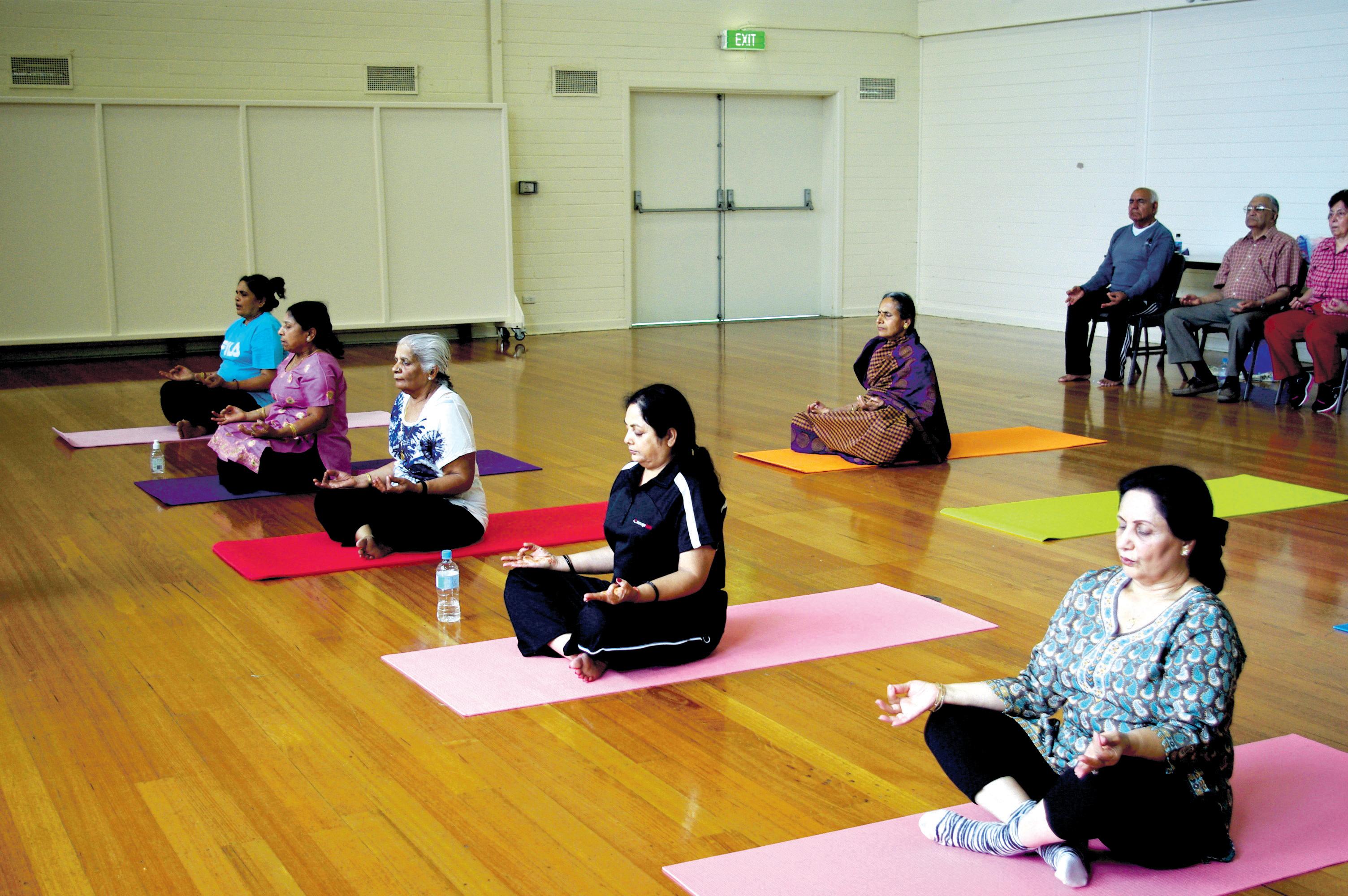
in senior years are visiting famous landmarks; meeting a range of people and getting to know their cultures and traditions; gaining a perspective in one’s own life and reassessing one’s values; going back to one’s roots, and gaining a new frame of reference for understanding the world”, adds Rakesh.
Rakesh and Sarita Sachdev and their friends have now travelled to every continent of the world, even Antarctica. “We boarded a cruise ship from Brazil, passed through Falkland Islands, went around the Antarctic Peninsula, touched Ushuaia (southernmost city in the world), and finished in Chile”, he recounts enthusiastically.
They have gone on cruises in Alaska, and from Sydney to Cape Town via Mauritius on the Queen Mary 2. East Africa, South America and China were fascinating in different ways. But on their trip to Lake Mansarvor and Mt Kailash they ran medical clinics in Tibet.
Travelling in Europe, they were caught up in the bomb blast in Madrid, and missed connecting flights, which was an adventure not easily forgotten.
Another treasured memory was a trip to Potsdam, where in 1945 the Heads of State of the war coalition (Josef Stalin, Harry Truman and Winston Churchill) met to decide on a deal about defeated Germany. But very special to Rakesh is a trip to Pakistan. “I wanted to trace my roots, and visited my birthplace. I had the privilege of visiting Nankana Sahib and Panja Sahib gurudwaras, and the Khyber Pass with an Army escort”, he says.
travellers will visit the Arctic in August. “We are taking a cruise around Spitzberg and going sightseeing in Norway and Finland. We are expecting 23 hours of daylight at that time of the year – it’s going to be lots of fun”! he says enthusiastically. Now that’s what real retirement is all about!
Work
Continuing to be involved with work is another option to spend your retirement optimally. Mira Mehra shows no sign of stopping at 73, working five days a week at her Centrelink job.
Sydney’s Saroja Srinivasan has worked as a clinical psychologist for over 45 years. “Work has always defined my life”, she says. Saroja is now keenly looking at opportunities to increase her work schedule – as part of the NSW Mental Health Review Tribunal, helping with policy and service provision issues.
Hardika Hirani gave up full time work way back in 2001. But since then she has continued to work two days a week, teaching book-keeping and MYOB at Padstow TAFE.
“I do it because I love it”, Hardika says. “I’m still interested in it and so I enjoy it. It keeps me mentally and physically active. I’m very happy with the arrangement, and have every intention to continue as long as I can”.
Keep your sense of humour
There can be trying times in the senior years. A sense of humour can help in small ways to counter these. Laughing at your own troubles or at your ‘senior moments’ can help
Suman Gandhok:
I could have danced all night…!

Smile more. Especially when you’re feeling down. Smiles, even forced smiles apparently, create positive chemical changes in the brain and make us feel good. Rent comedy movies regularly and watch the comedy shows on TV. Listen to people tell jokes and tell one or two of your own. Rediscovering your sense of humour will help your well-being to improve.
Dance
It is common knowledge that doing crossword puzzles keeps your brain agile in the older years. You need to exercise the brain, in the same way that going to the gym exercises the body. But new findings show that dance has the exact same benefits as doing a crossword puzzle. Dancing not only increases oxygen to the brain, it also releases a protein that strengthens cells and neurons.
The coordinated movements in dance are also said to create the same kind of cerebral activity involved in learning, keeping the brain nimble and active. Mira and Arvind Mehra are great fans of dancing and don’t let the slightest opportunity pass by. So, turn on that music. The best thing is, you’re probably not even selfconscious any more!
Clear misunderstandings
Senior years are a good time to clear the air. Get back in touch with all the people at work or in your family with whom you may have had misunderstandings. Confront your emotions, and sort things out. Don’t leave room for past regrets. Clear the slate and rekindle friendships.
A time to find yourself
The penultimate stage in our life is the time when we realise our true self. Perth senior Patrick D’Mello has these profound words to share, “While in our twenties we might have thought of ourselves as ‘unique’ and ‘one of a kind’.
As we grow older we come to accept that we are really just like every body else. Our sense of uniqueness gradually diminishes as our bodies give way, and as we realise that the organisation we devoted our lives to at work, has continued on quite all right without us. At my age, I am reassessing my life and finding my purpose in this world. Perhaps this is the aim of my life, or my duty at this stage of life, just as the sages in ancient India said all those centuries ago. Yes, it is a kind of spiritual awakening”, he says.
Developmental psychologist Erik Erikson, who did vastly seminal work in this area of study, came to a similar conclusion. His theory of human development says that our personality develops in eight stages, from infancy, well into our old age. At each stage, a particular conflict has to be resolved successfully for a specific aspect of personality to develop, and before we move on to the next stage. In our final stage of development this conflict is to be able to ‘maintain ego integrity’ (holding on to one’s sense of wholeness), while ‘avoiding despair’ (fearing there is too little time to begin a new life course).
The successful negotiation of this conflict results in ‘wisdom’, which is defined as ‘accepting without major regrets the life that one has lived, as well as the inescapability of the end of life’.
So enjoy your senior years, with the right attitude it could well be the best time of your life.
10 MARCH (2) 2013 www.indianlink.com.au
Yoga for seniors

MARCH (2) 2013 11 NATIONAL EDITION
Networking with the neighbours
A concerned resident takes on the task of uniting his neighbourhood for a common cause
BY RITAM MITRA
Neighbourhood Watch programs have been in place in Sydney since 1984, but have struggled to keep up with increasing population densities as well as the fast-changing nature of criminal conduct and community interaction around Sydney’s suburbs. The power of social media has led to the rise of EyeWatch, a Facebook-based version of Neighbourhood Watch, which enables local residents to communicate with each other on a real-time basis, while also relaying their concerns directly to the police, whose involvement is paramount to the success of these programs. Following a spate of break-ins in the Sydney north shore suburb of Wahroonga, local resident Rohit Ralli decided it was time for EyeWatch to hit the Kuring-gai Shire – and its success has been remarkable.

“When we had the break-ins, which were quite blatant, literally 100m from my house, there were four on the same day, and one of the families was at home,” recalls Rohit, who was also recently recognised as Ku-ring-gai Council’s Citizen of the Year. “They were getting more and more brazen to hit four houses in a row in winter, when everyone was huddled around the television and fireplace, to clean out the study or another room”.
Rohit first got in touch with Neighbourhood Watch about the problem, then called the NSW Premier Barry O’Farrell, whose office is in Wahroonga, and with whom Rohit had previously worked.


“His office was extremely helpful. They put me in touch with their colleagues and the EyeWatch coordinator,” explains Rohit.
At that stage the EyeWatch program was a start-up, and Rohit decided it was time for the community to see how EyeWatch could help them.
“I called the people from EyeWatch, the police and Neighbourhood Watch and I said, ‘Why don’t you come over to my place – I’ll get 20 of my neighbours together, and we can discuss the two main vertical issues in our neighbourhood – one, retirees; and two, young families who don’t have much time’. Both these verticals have very specific needs and handicaps,” reveals Rohit.
After chatting with EyeWatch and the police, Rohit and his

neighbours decided EyeWatch could help – but only with some fine-tuning. He targeted 300 residents with stickers and fridge magnets, encouraging neighbours to get to know each other and exchange telephone numbers.
“Some of the people haven’t got to know their neighbours in 25 years. The bottom line is the police won’t show up depending on the priority of the problem they have – it could be 10 minutes or it could be 3 hours. But when you call neighbours, 2 of them can show up in 2 minutes,” he explains.
And the project has taken off in spectacular fashion. “There’s been a phenomenal change in the dynamics of the community. Kids are playing together, adults are setting up bridge clubs, and there are joint yoga sessions going on,” says Rohit. He even organised a free fair, including a free sausage sizzle, clowns, balloons, as well as the presence of policemen and women, paramedics with an ambulance, and SES members.
Barry O’Farrell and Member for Bradfield Bob Fletcher were also present, and with 300-500 people turning out, it was no surprise that a sense of community became even more prevalent, following the fair.
Of course, although encouraging
a sense of community is pivotal to the success of EyeWatch, one of its main benefits lies in the use of social media to address issues and suspicious behaviour in the community.
“It’s all about rights and obligations, and some people are unsure,” says Rohit. “The police have told us, you have the right to ask a question of someone on your street, and you have the right to take photographs of that person as long as you’re in a public place. In the event there’s an issue, you can post on the Facebook page – if there’s a car in front of your house you don’t recognise, you can go and ask them, ‘Sorry, but what are you doing in my neighbourhood?’ and if they don’t answer you, you can put the number plate on Facebook, where the EyeWatch co-ordinator and the police will be able to follow it in real-time. The community has become far more confident – because they can ask questions and the police will back them up.”
Rohit acknowledges that the Neighbourhood Watch program had its benefits – but is stuck in the past. “Neighbourhood Watch is a has-been. It was a great program when the only way people could communicate was to actually get out of the house and talk.
Nowadays, nobody gets out of the house. Everybody is online. We’re putting up EyeWatch stickers on people’s doors, windows, bus stops,” he says.
And it’s definitely working, as there have been literally zero breakins in the area since the EyeWatch implementation.
“The community is the eyes and ears of the police. The minute we see anything suspicious, we take a photograph. We don’t take action ourselves, and the police will follow that photograph up straight away. I’m sure the word has gone out to would-be criminals that this isn’t a neighbourhood that is criminalfriendly,” says Rohit.
For him, one of the biggest success stories was a neighbour who was previously quite reclusive.
“There is a gentleman four houses down from me who has lived here for 32 years. He only used to meet his neighbours twice a year, and now he’s out there waving to people, stopping and chatting and talking to people. There’s an elderly lady who lives next door to him whose husband just passed away – he’s fixing her wiring and taking her garbage out. He called me three weeks ago, saying there’s a car outside your house, here’s the number plate, what should I do?
I told him to ask them what they
“There is a gentleman four houses down from me who has lived here for 32 years. He only used to meet his neighbours twice a year, and now he’s out there waving to people, stopping and chatting and talking to people”
Rohit Ralli
were doing there – and he did!” says Rohit.
The remarkable increase in community spirit is by no means a by-product of EyeWatch – indeed, the fantastic culture created by the program is actually one of the key drivers towards building a safer community for each and every resident. While EyeWatch’s Facebook programs are well and truly underway, there are more developments planned for the future, with Twitter and SMS components also in the pipeline. Rohit’s efforts have made a significant impact on the neighbourhood community in building a relationship based on trust and mutual respect. Has your neighbourhood caught on yet? Visit http://www. police.nsw.gov.au/about_us/ structure/specialist_operations/ operational_communications_ and_information_group/project_ eyewatch for more information on how EyeWatch can help your community.
12 MARCH (2) 2013 www.indianlink.com.au
p EO p LE
Rohit Ralli with Premier Barry O’Farrell, police and SES personnel, and members of the public;
Above: Receiving the Kuring-gai Council Citizen of the Year Award
Supermarket IGA
Very busy shopping centre in a busy location
New shop with new fittings, in southern area
Takings: $120,000 per week
Rent: $276,000 per year including outgoing

Lease: 10 years with 10 year option







Kontos Business Brokers (Ask for Tony)
Mobile: 0419 600 259 Shop: 9667 1878
Email: kontosbb@hotmail.com
Address: 781 Botany Rd, Rosebery NSW 2018
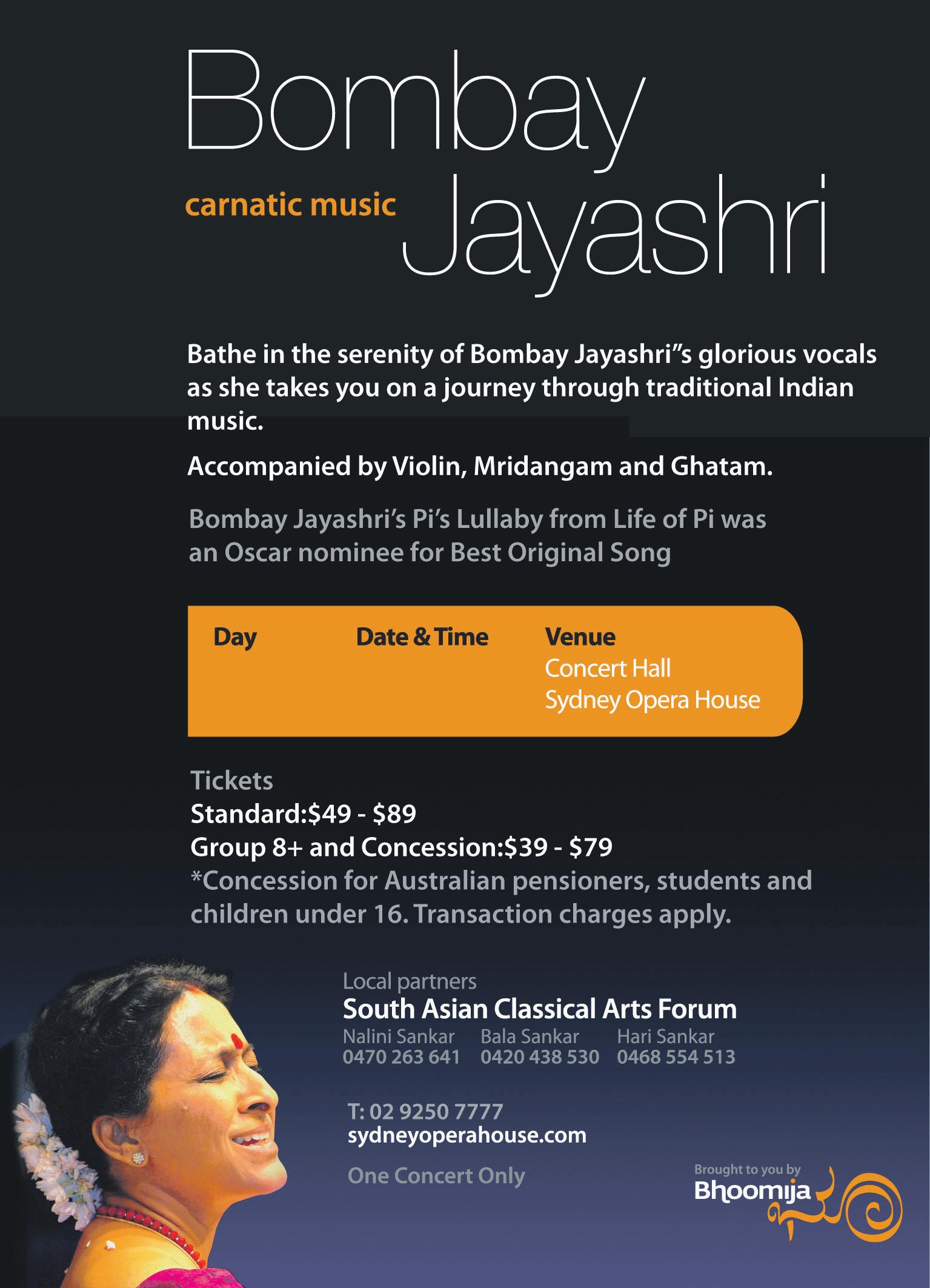

MARCH (2) 2013 13 NATIONAL EDITION Call 0409 966 966 now $100 off if you mention this advertisement Offer Valid till 31st March 2013 Adress: Suite 903, Level 9, 370 Pitt Street, Sydney Email: admin@longtonlegal.com.au Samuel Li Solicitor FREE FiRSt ConSuLtation ContRaCt REviEw Fixed fee Coveyancing Lease Are you entitled to stamp duty concessions? What is a ‘cooling off’ period, and who can cool off? Should I have the contract and S149 checked before I buy? We are ToyoTa Camry speCialisTs • OpEN 7 DAys p h ONE : 02 9688 3322 why wAL k us ED c AR s 1997
CSi Immaculate, automatic, air conditioning, power steering. Very good example of this model. $2250 QSQ697 1998
LPG/Petrol Automatic dual fuel upgraded model, too many extras to list. Save $$$ with LPG, low kms. $3995 AGX25U 2002 Ford Laser LXi Economical 1.6L, air conditioning, power steering, air bag. Reliable mid sized family transport. $3650 AQL72D 350 GREAT wEsTERN hwy (cNR sTATION sTREET) wENT wORThvILLE Nsw 2145 MENTION ThIs ADvERTIsEMENT fOR A fREE 36 MONTh AusTRALIA wIDE wARRANTy
Toyota Camry
Toyota Vienta VXi
Sunday Apr 28th, at 5 pm


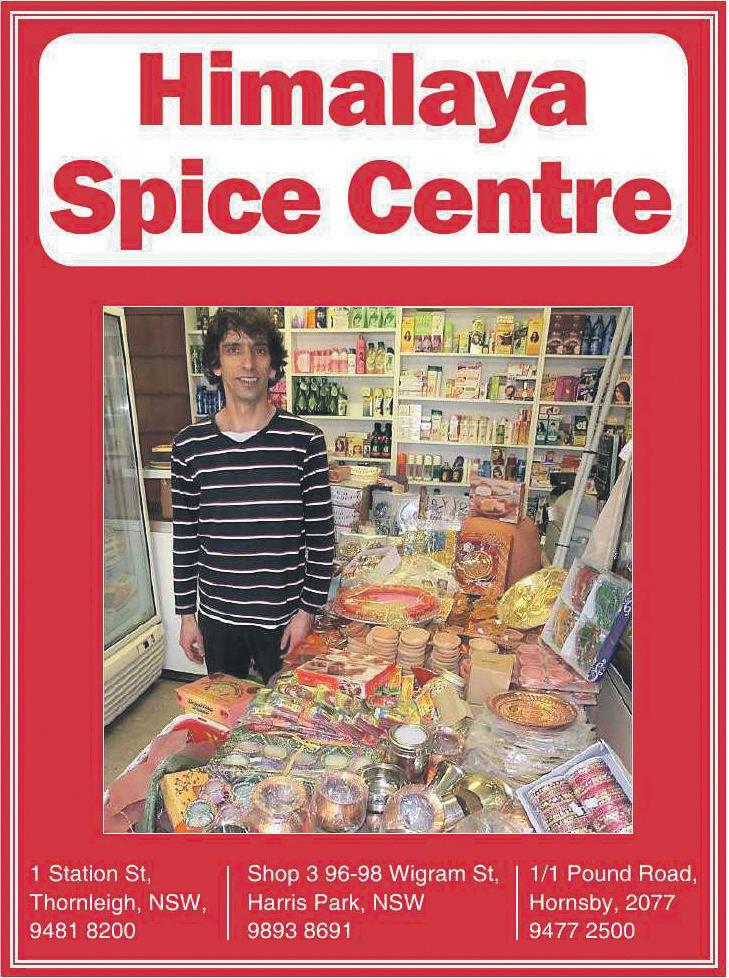
14 MARCH (2) 2013 www.indianlink.com.au

MARCH (2) 2013 15 NATIONAL EDITION
Cinderella’s Indian avatar
There’s an interesting twist in the tale in this all-time children’s favourite
The show took the shape of book-reading, as Nair’s clear and crisp narration accompanied the dances on stage. Catchy tunes from the most recognisable Hindi and Malayalam films interspersed the narration, as the audience tapped their feet and cheered away!
Each dance number was meticulously choreographed to suit the scene of the story. Kids dressed in Kerala mundu set dancing to numbers such as Arrane Arrane and Chimmi Chimmi from the popular Malayalam movie Urmi had the crowd applauding heartily.
The scene depicting the wedding of Sitarella’s father, King Viren was cutting edge in choreography. Portrayed as a flashback scene, it was videoed in black and white to give an impression of a yester-year feel. The song Maa from the movie Taara Zameen Par formed the background music for this scene, bringing tears to some watching the video of a young Sitarella missing her mother Queen Thenmozhi.
Sitarella’s maturing from a child to a beautiful young woman, was a clever role change on stage: the young Sitarella (played by Swarna Pillai) gave way to the adult Siatrella (played by Vidya Gokul) in the exact same costume, at the end of the first act.
In the second act, sixteen senior dancers took to the stage, led by Prince Sundarakuttan (played by Govind Pillai). In his Indian avatar, the Prince was a picture of poise and charm. With exuberant energy in his neat jathis and mudras, he took the stage by storm with his rendition of Gopagane from the famous Malayalam movie Bharatham Vidya Gokul, good-looking, vivacious and graceful, was well cast too, stunning in her beautiful hand gestures and feather-like body movements. Their duets bowled the audience over.
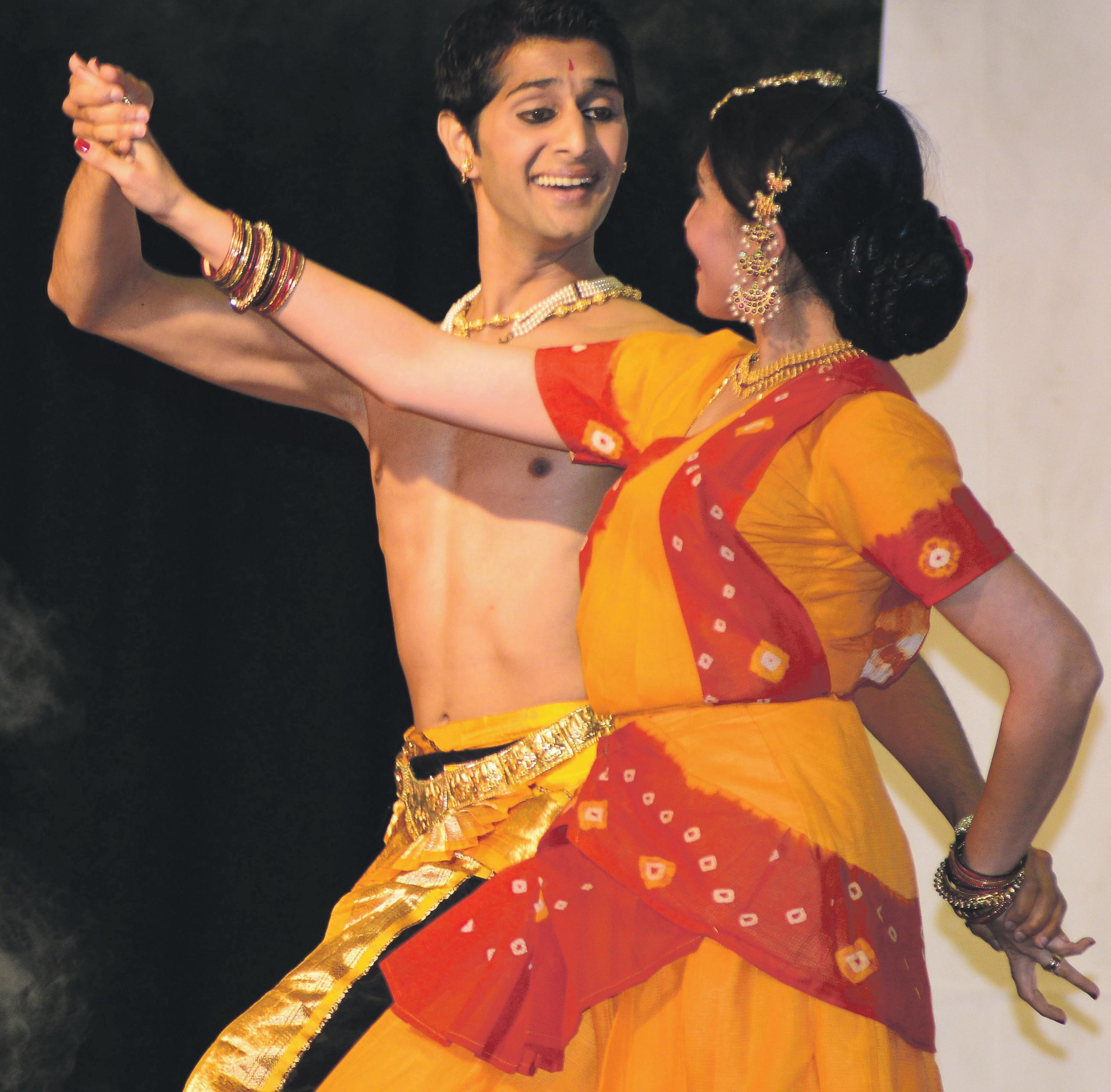
What did Sheila Nair use in place of the proverbial golden slipper? Why, the anklet, of course!
It is a classic fairy tale. A beautiful maiden suffers unjust oppression at the hands of her evil stepmother: her good nature offers her a chance at a better life, and after a slipper-matching finale, the triumphant reward - of the handsome prince - is hers for the taking.
Cinderella’s story is one that has stood the test of time. The earliest record of it dates back to the 1st century BC, but even today, it can captivate. This was proven without a doubt at a recent Sydney staging, where it was given a fascinating
Indian avatar as Sitarella.
Sydney-based dancer and choreographer Sheila Nair brought this production to life by infusing generous elements of Indian ethos into it, such as glimpses of the Maharaja days, popular Malayalam songs, even a touch of Bollywood. And what did she use in place of the proverbial golden slipper? Why, the anklet, of course!
The production, a fusion of classical, semi classical and folk styles, was staged at Red Gum Function Centre at Wentworthville
in early March, presented by Sheila Nair Productions, Sydney Malayalee Association and Sydney Malayali Radio.
The opening scene took the audience straight to a land of enchantment. A colourful and luscious forest scene projected on the screen set the backdrop as 22 junior artists ranging from 5 to 10 years in age, made their way on stage. Playing gleefully, they stumbled on to a hidden treasure box and found inside it a golden book – telling the story of Sitarella.
Sundarakuttan’s grief was remarkably portrayed by Govind as his brief encounter with Sitarella came to an abrupt end, left as he was with only an anklet to remind him of it.
But all’s well that ends well, and soon the stage was filled with dhols in the grand finale of the royal wedding of Sitarella and Prince Sundarakuttan. The crowd was in awe as the bride was escorted out in a splendid carriage, reminiscent of a Maharaja’s buggy, designed and crafted locally.
Earlier in the evening, a short film was shown on the making
of Sitarella, providing an insight into the work of artistic director Sheila Nair and the 38 artists who worked relentlessly towards this mega dance production.
KP Jose, President of Sydney Malayalee Association, welcomed the audience and special guests Arun Kumar Goel (Consul General of India in Sydney) and Loren D’Souza (General Manager of VFS Asia Pacific Region) lit the ceremonial lamp with Sheila Nair. Sheila, a classical dancer herself with more than a decade of international experience up her sleeve, said on the occasion that the production depicted the many facets of dance-drama intricacies. She congratulated her troupe of dancers for their wonderful performance, adding that the younger ones must have gained much from the experience. She presented them with certificates and mementos; they in turn, gave their own memento to their mentor and teacher, fondly called “captain”.
The production raised funds in excess of $3,000 along with support from sponsors and advertisers. The sum was presented to George Thomas of the Sydney Malayalee Association and Babu Sebastian of Sydney Malayali Radio to help these two non-profit community organisations in their work.
 Padmanabhan Karamil
Padmanabhan Karamil
16 MARCH (2) 2013 www.indianlink.com.au
STAGE
Photos: Sunny Cherian
Sheila Nair presents the proceeds from the evening to voluntary Malayalee organisations
Govind and Vidya are Prince Charming and Cinderella



MARCH (2) 2013 17 NATIONAL EDITION
You can be Raj Kapoor too
An interactive art installation gives everyone a chance to be a star with Bollywood’s ultimate showman
All of us have been guilty of putting ourselves in the position of the leading characters while watching a movie, taking on their struggles as though our own and rejoicing in their triumphs. Visitors to the recently concluded Perth Festival got to put themselves in the place of Raj Kapoor and his leading ladies, through My Name is Raj, a distinctive installation by artist Srinivas Krishna.
This was art at its interactive best. An old shop front on Beaufort Street in the heart of Perth was transformed into a magical homage to Raj Kapoor. One wall was lined with carefully mounted photographs from a bygone era, studio portraits of people in different guises. In the days before cameras were a part of every household, this is what people did. They photographed themselves strolling through beautiful gardens, leaning majestically on pillars, driving cars or even dressed as doctors or lawyers. Most of us have pictures of parents, grandparents or even ourselves in settings like these.
The aspirational quality of these photographs was carried forward into the realm of films through My Name is Raj, which gave people starring roles in iconic scenes from Kapoor’s films. Visitors could have their picture taken in a makeshift studio, and then watch as their photographs were manipulated and transformed into characters in the movie that was played on a screen outside. They could also take home a photograph of themselves thus transformed.

Originally commissioned by Luminato and the Toronto International Film Festival, the installation travelled to Perth for the Perth International Arts Festival held from 18 Feb to 2 March.
Festival Artistic Director

Jonathan Holloway praised the installation, saying “Srinivas Krishna brings a filmmaker’s eye and a visual artist’s sensibility to the celebration of 100 years of Bollywood films. Putting you right at the centre of the work – this is 15 minutes of fame that feels like it predates Andy Warhol”.
Srinivas Krishna is an award winning film director and artist based in Canada. His first film Masala debuted to critical acclaim in 1993 at the Toronto and Sundance Film Festivals. It was voted among the Best South Asian Films of the 20th century by the British Film Institute in 2002. Since then he has produced
and directed a number of films that have been critical successes. His first feature documentary as writer-director, Ganesh, Boy Wonder premiered in the Official Selection of Hot Docs, the Canadian International Documentary Festival, to standing ovations.

In 2008, he created When The Gods Came Down To Earth, a largescale public video installation in Federation Square, Melbourne, where he recreated classic images of Hindu gods and goddesses using dancers and special effects. While describing My Name is Raj, he states “… the installation is about - what does it mean to perform? (These days) when we take someone’s picture we try and capture them unawares. A candid picture that we feel captures their authentic, unguarded identity. In those days, you would go to a photo studio and pose. Not just pose but put on a costume… there would be a painted backdrop
and you would really create a kind of persona that you would present to your public”.
The work proved very popular with the festival audience in Perth. The director said, “What’s not to love? You get to become part of the art and take it away with you.”
The India connection at this year’s Perth festival was not limited to Raj Kapoor though.
The glamorous Bollywood dancer and actress Isha
Sharvani, a Perth girl herself, dazzled audiences in Shiva Shakti, a performance blending contemporary and classical Indian dance by her mother’s Daksha Sheth Dance Company.
There was also British journalist and author Anne de Courcy discussing her historical book The Fishing Fleet, which tells the story of hundreds young British women who went to India during the Raj period in search of husbands.
Visitors could have their picture taken in a makeshift studio, and then watch as their photographs were manipulated and transformed into characters in the movie that was played on a screen outside
18 MARCH (2) 2013 www.indianlink.com.au
A RTs
CHIDAMBARANATHAN
Photo: PIAF Quick sale, Charcoal chicken shop for sale, locate western Sydney about 15 minute from Penrith. Selling 190 to 300 chickens a week , 200 to 300 burgers a week 20 boxes chips and many fish, ice cream, salad and drinks. ... can add coffee, asking price $135000 return back money in just one year easily .. Rent $850 a week. Long lease. ... profit after tax around $2800 to $4500 a week. ReStauRant foR SaLe Contact me 0458 709 999
My Name is Raj by Srinivas Krishna
for Fast Food business (Pizzas,Burgers, SandwichesSubmarines,etc.)
Free Visa Advice & Assessment* for Students & their Employers
Course Admissions (Australia wide), Student Visas, Work/ Sponsorship Visas (457s, RSMS, ENS), Partner Visa, Family Visa, Tribunal Appeals & Waivers, General Skilled Migration.
Our clients are our best spokespeople:
• Very courteous and attentive service. I had a few issues for my visa due to time restrictions but it was handled very professionally and without a glitch…great customer service and professionalism. Thank you for all your extended help and efforts, highly appreciated. – S.M. Athar (SC 457 visa), Windsor, NSW
• I consulted couple of agents and was very disappointed as they were very much sure that there is no 457 and I was not eligible for that. This is a special note for thanking Mr. Ramneek for helping me throughout my 457 visa process.
– M. Ramakrishna Jeksani, Homebush, NSW
• We were hopeless after our initial application was mismanaged. Now I got it successfully within 4 weeks my grant which was done skilfully without any questions from case officer, Thank you Ramneek. S. Kola (SC 457 visa to PR), Liverpool, NSW
• Has understanding of the system & very helpful. He is reachable & responds to the queries very well. – Narendra Gupta (SC 457 to PR), Ashfield, NSW

• Everyone thought that I won’t get my 457 visa....thank you for making my application successful. – S. Rao, Casino NSW
• You have been excellent in handling our case & all its difficulties including my daughter who has already turned 19. – K. Sanyasi (457 visa), Warwick Farm, NSW
• Thanks lot for my sponsor (457) visa. It didn’t look possible, but I got it finally with Ramneek’s help & guidance. – Kiran Kumar Patel, Harris Park, NSW
• My 457 visa is granted. Thanks for the co-ordination, Ramneek Sir.
– R.T., Cook, Westmead, NSW
• I was on a bridging visa...& I got my 457 visa within 28 days & without leaving Australia - Amandeep Kaur, Merrylands, NSW
• Everything was well planned & Systematic. Must recommend for Immigration issues. – H. Gandhi, 457 Visa, Merrylands, NSW
• I got my 457 work-permit (from student visa) within 4 weeks. Mr. Ramneek done his work very accurately, on time, without any failure & provides perfect guidance. I am very happy with his work & very thankful to him.
– Chirag Patel, Kew, Victoria
• I was able to negotiate through the complicated process & retain a baker full time in my business. For 457 working visas, Mr. Ramneek Madahar’s services are highly recommended. Definitely a 5 star service.
– Harry, Bakery Owner, Oatley, NSW
• We really appreciate Mr. Ramneek’s support for my 457 visa application. He was very organized and prompt, which we believe lead to successful & quick outcome even though we are a newly established company without much financial result. – H. Uzumasa, Penshurst, NSW
• I sincerely appreciate the time you spent reviewing my case as it became complicated due to time frames. Your advice was very helpful & gave me a new hope. Finally, I got my PR. Thank you so much for your help.
– Vikas, Homebush, NSW
• Ramneekbhai, thank you so much for your help. I got my 457 visa… excellent service, thanks - Krushnakumar Patel, Parramatta, NSW
• Ramneek Sir handled my SC 190 visa & I got approval within 4 weeks of lodgement.
I acknowledge my deepest thanks for his fabulous work. - A. Shah, Perth
• Because of his sound knowledge & experience, my 457 has been approved within 2 weeks. I would highly recommend – R. Gaur, Bikaner
• I would like to express my sincere thanks to Ramneek Sir for his well done work in getting my PR. – M. Marediya, Perth, WA
• Has impressed me with the accuracy of his guidance & the time frames he gave us for our (Sponsorship/457) applications were spot on. I personally recommend anyone to use his services. – Sana Glass Pty Ltd., Lansvale, NSW
• Thank you very much for your support while organizing the sponsorship application for our employee. We are very pleased with your work ...will confidently recommend you & your company to our business partners & friends.
– Vaucluse Auto Repairs P/L., Vaucluse, NSW
• Initially, I was a bit doubtful whether my company will get the (457) sponsorship or not because mine is a small company. Thank you very much for your hard work & guidance. – Prime Partners Pty Ltd, Casino, NSW
• Ramneek handled my sponsored migration visa with precision of a surgeon. I reckon, my application’s short processing times was owing to Ramneek’s immaculate understanding of the process, sharp eye for details in reviewing documents and presentation of the case. The first check list for submission that was customized for my professional background and situation) that Ramneek provided served as the ultimate guide in assembling the application. All my queries were answered in less than 24 hours. Such professionalism and efficiency made my visa process a breeze… highly recommended for anyone serious about his/her immigration plans. – V. Srivastava, Melbourne, VIC
• Thanks for the effort taken in securing Ganga’s work (457) visa. I know it was a difficult case, much appreciated, thanks. – Dhaya Chandra Pty. Ltd., NSW
• I withdrew (my) first 457 visa application…& I got it the second time with Ramneek’s help. Thank you so much. – C. Koppela, Homebush, NSW
• Ramneek, handled our matter in a very professional way…was precise with what he wanted…his knowledge is deep and accurate. I felt very comfortable.
– Shree Ram Pty Ltd, Lidcombe, NSW
• Many thanks for acting promptly when needed. – K. Patel, 457 Sponsor, Sydney
• Very satisfactory service provided by Mr. Ramneek Madahar regarding my visa complications. – P. Singh, Ellenbrook, WA.
• I am really very thankful & overjoyed... lead me through the toughest situation to final success. – N. Singh, Mohali, India.
• After 8503 (no further stay), condition waiver, my student visa was refused. Thank you Mr. Ramneek for a successful appeal at the Migration Review Tribunal without a hearing. – P.D. Glenmore park, NSW
• I was finally able to receive confident & correct advice in relation to my situation from Mr. Ramneek Madahar. – G. Bastola, 457 Visa, Homebush, NSW
• Thank you for your timely assistance with our restaurant sponsorship and 457 visa grant. – CH Patel & DC Patel, Restaurant Owners, Camberwell, Victoria
• Ramneek Sir has made our 457 visa 100% successful. Thank you forever.
– Shruti Shah, Merrylands, NSW
• I was a student in Australia. Mr. Ramneek helped me for a 457 visa.
– Chaudhari Prakash, Ashfield, NSW
• I was on a Bridging visa for my SC885 visa application on 110 points. Mr. Ramneek made my 457 visa possible. – C. Patel, Merrylands, NSW
• For any complex cases, to anyone who needs help in immigration... don’t worry you are in safe hands. – A.H., 457 Work Visa, Cronulla, NSW
• I sincerely recommend Mr. Ramneek’s services for immigration.
– K.K. (457 to PR), Central Coast, NSW
• Thank you Ramneek, I wish you all the best. – S. N., GSM Visa, Egypt
• Mr Ramneek Madahar, thank you very much for our PR. Your efforts are appreciated & thanks for looking after my case.
– D. Patel, Business Skills, Melbourne, Victoria
• I am thankful to Ramneek for my permanent settlement in Australia.
– Vikas, GSM, Parramatta, NSW
• I applied for Regional - SC119 visa under the DRC… Mr. Madahar has handled my application very well. – Vijaya, Bourke, NSW
• Thank you Mr. Ramneek for my ENS PR under exceptional circumstances.
– S. Kumar, Croydon (457 to PR), NSW
• Thank you for your support & help towards my ENS PR. – S. N. (457 to PR), Ingleburn, NSW.
• Thanks Very – very much for your help for extending my student visa and 457 and RSMS advice. – A.Rani, Smithfield, NSW
• I am very thankful to Ramneek Sir for his help & support for my ENS residency. I had no hopes left & was planning to go back to India with my family.
– K. Shah (457 to PR), South Strathfield, NSW
MARCH (2) 2013 19 NATIONAL EDITION
The Great Learning Tree Pty Ltd (Ramneek Madahar, RMA# 0428459) UNIT 6, 24-26 Morwick St., Strathfield, NSW 2135 (5 min. walk from Strathfield Station. Opp. Strathfield Recreational Club/Tennis Courts) * Provision of complimentary advice &/or assessment for our eligible students &/or their employers is at our sole discretion. Education, Career & Visa Solutions @ The Great Learning Tree
457 visas
For appointments, please call 02 9745 3106 or 0412 764 660 or email: enquiries@tglt.com.au
State Sponsorship for IT professionals on a 457





20 MARCH (2) 2013 www.indianlink.com.au AAS ASSOCIATED SERVICES ACCOUNTING Venkat Kantipudi - Tax Agent and Mor tgage Broker (Home Loans) Suite 11, Upper Ground Floor, 55 Phillip Street Parramatta NSW 2150. Ph:(02)9633 2536 Mobile :0421 374 365. | Postal Address: PO Box 3258 Parramatta NSW 2124. Email :venkat@associatedaccounting.com.au Professional Service at an Affordable Price TAX RETURNS Preparation and lodgement of Taxation Returns for Individuals, Par tnerships, Trusts, Companies and Super funds. This of fice utilises the Electronic Lodgement Ser vices (ELS) provided by the ATO for lodgement of all tax returns. Returns that are lodged by ELS have less than 7 day turn around period. Your Refund from the ATO goes directly into your bank account within 7 days from the date of lodgement. l Accounting l Tax Returns l Home Loans l Superannuation www.associatedaccounting.com.au Venkat Kantipudi Tax Agent and Mor tgage Broker

MARCH (2) 2013 21 NATIONAL EDITION


foR ipHone, ipAd And AndRoid www.indiAnlink.CoM. Au ConneCting you to tHe woRld indiAn link RAdio
AIBC- NSW hosts launch of ROBE
Australia’s first collaborative Indo-Chinese Investment
Experts predict that when the current Australian mining boom is over, the key to Australia’s economic growth will be its capacity to meet the basic food needs of over nine billion people worldwide. Asia’s middle class is expected to make up more than 2.3 billion of the world’s middle class by 2030, and the challenge globally will be to meet their food requirements.
Two of Asia’s most populous countries, India and China, have collaborated in an investment in the agricultural food processing sector in Australia. The Australia India Business Council (NSW) chapter hosted an evening, where the managing director of Riverina Oils & Bio Energy Pty Ltd (ROBE) could tell the story of this amazing venture, to their members and guests.
“What makes this venture extra special,” said Sheba Nandkeolyar, President of AIBC NSW, “is that Riverina Oils & Bio Energy is the first collaborative IndoChinese investment in Australia, in the food/agri area in Australia. It is also the first Green Field Investment funded by Indian Banks, namely the State Bank of India and AXIS Bank in the Food Agri Sector”.

The managing director of ROBE, Dhruv Saxena addressed the 70 plus leading business and political attendees. After five years of planning and construction, the ROBE business in the NSW Riverina is now home to one of

Atte
the largest oilseed crushing and refining plants in the country.
“The work which we have done is an example of how working with foreign investors can help overcome the need of capital for the Australian agricultural sector”, he proudly announced to the attendees.
Saxena estimates that while there will be 80 direct jobs at the plant in Bomen (near Wagga Wagga), over 500 indirect jobs will be created locally. With more than 500 pumps, 42 kilometres
of cable and 36 kilometres of piping, it’s an important facility in the Riverina district. He expects an incremental requirement of over 100,000 tonnes of oilseed (planting of 75,000 hectares) in the Riverina region alone. This will provide farmers with an alternative cropping option, and the possibility to earn over $100 million in exports to Asia. And $150 million in import substitutes of protein meal, for animal feed in 5 years.
Saxena, himself a Melbourne based businessman, explained the

What Would You Do If You Were Given A Once In A Lifetime Opportunity To Get Involved In An Exciting Business . . . BEFORE Anyone Else Even Knew About It?
A multi – million $US Company is set to launch a Healthy Coffee and Tea in Australia and New Zealand in the next 4-6 weeks. There are 27 million cups of coffee drunk in Australia every single day. That’s 10 Billion cups per year. Want a piece of that business?
To learn how you can position yourself prior to the launch simply call (02) 8072 6266 NOW for more information. $10,000 per month possible in just 6 months.
Wagga Wagga. He stated that it was chosen for its proximity to a large canola growing district in southern and central NSW, and northern Victoria. Wagga Wagga also has good local skills and talents available. The investors also wanted the site to be close to direct freight routes to Melbourne and Sydney.
ROBE initially started in 2009, with a capital cost of $64 million with three partners: Dhruv Saxena, a leading Indian businessman, Satya Agarwal, chairman of Bhoruka Group, and Ravi Uppal, who owns 60% of ROBE. A US technology venture capital group, Lotus Ventures, holds the other 40%. However, the cost during construction phase blew out to about $100 million, and current shareholders include SP Chemicals, China, Asia wide Holdings, Singapore, Lotus Ventures, New York, and Bhoruka Industries, India In spite of the cost blowout, Saxena is confident that the investment will pay off in the long term.
With its current positioning to meet the growing needs in Asia, while using local Australian skills and resources, ROBE is an innovative step for an Indian agri investment.
Saxena estimates that while there will be 80 direct jobs at the plant in Bomen (near Wagga Wagga), over 500 indirect jobs will be created locally
iNteRNAtiONAL CLAiRVOYANt/sPiRitUAL HeALeR mR mANe
THE MAN YOU CAN TRUST WITH HIS NATURAL GOD GIFTED POWER OF SECOND SIGHT.
SUCCESSFULLY HELPING DESPERATE PEOPLE FOR THE PASSED 25 YEARS.
Specialist in relationship, Bringing back love one, Good luck, Success in business, Sexual difficulties, Court cases, Marriage and family problem, Master of removing all problems
100% GUARANTEED-PRIVATE AND CONFIDENTIAL DONT SUFFER IN SILENCE
ASTONISHING RESULT IN 24HRS
CALL ON 0406 032 635 or 0405 614 938
MARCH (2) 2013 23 nAtionAl edition
N ti ON: L A dies AN d Ge N t L eme N
b U si N ess
“The work which we have done is an example of how working with foreign investors can help overcome the need of capital for the Australian agricultural Dhruv Saxena
PAWAN LUTHRA
DD Saxena, MD
A traditional ground breaking ceremony for the ROBE processing plant in 2009



24 MARCH (2) 2013 www.indianlink.com.au 09 8774 6160 Hallam Wantirna 03 9800 3988
Holi happiness with Telstra
Alister Park, GM Niche Marketing at Telstra, talks about the company’s latest offers for South Asian customers

to family back home was a real
Q: Unlimited calling to eligible fixed and mobiles lines in India, Bangladesh, USA, Canada for $10 a month from your eligible Telstra Home Phone sounds like a great deal! Is this offer for a limited time?
a great deal! The offer was so successful we decided to extend it. If you sign up before the end of April you can keep the $10 per month price. After that date the price is $15 per month, still a great deal.
Q: What can Telstra offer to those of us on eligible Telstra Mobile Plans who call overseas from our mobile?



For anyone wanting to call another country, we have other packs available. Just come to one of our stores or go online to find out more.
Q: Many people use calling cards and online sites for overseas calling. What makes these Telstra offers better?



A: Nothing is as simple as picking up your phone and dialling. No need to type in long pin numbers. Call from your home phone and talk for as long as you like, everyday!
The community enjoyed the innovative Telstra photo service, as well as the opportunity to make a free call to their loved ones in selected countries overseas. Telstra is all about connecting people, so seeing their smiles as they spoke
We have launched a similar $10 per month pack that offers a low 2c per minute voice call rate, with NO call connection fee, to India. You also get $10 of included credit per month (which expires at the end of the month) to use on international calls and standard SMS, so if you use it all for calls – that equals 500 minutes of calls per month!
And if you want to call overseas while on the move, our mobile packs are a great option. You can call overseas using Australia’s largest and most reliable national mobile network. Did you know that our network covers double the square kilometres of any other mobile network in Australia? Our network is truly without equal.
Q: Why has Telstra launched these offers?



A: Telstra is all about connecting people. The South Asian
community is a strong and growing one. We realised that our South Asian customers wanted simple options and great value for calling overseas, and these offers give them just that. They allow our customers to stay in touch with loved ones whenever and wherever they like. We know our customers love these offers because so many are signing up, and there has been a strong uplift in calls to India and Bangladesh (among other countries). Customers enjoyed making calls particularly during Diwali, and we expect it to be popular again soon as people call to wish their families a happy Holi!
Q: Do you have staff that can assist South Asian customers?

A: Definitely! We at Telstra take pride in offering a great customer service and meeting our customers’ needs. We have a number of stores with South Asian staff waiting to help you! In Sydney you can visit us at Parramatta, Rouse Hill and World Square stores or, in Melbourne, you can visit us in Chadstone, Fountain Gate or Melbourne Central.
Customers can visit any Telstra store, talk to our staff, look at our offers and test our products. Most of the phones, tablets and Telstra services in these stores are live and working – so you can try before you buy!
Telstra takes pride in being a multicultural company. We come from a diverse set of countries and cultures but we have much in common, such as pride in working for such a great company and the desire to go out of our way to help our customers!
Q: What else can we expect to see from Telstra this year?
A: We will continue to be involved in community events, continue to listen to our customers and we will continue to deliver great value telecommunications products and offers that meet our customers’ needs. We encourage all of Indian Link’s readers to come and see what we have to offer you.
From all of us at Telstra, we would like to wish you all a very happy Holi!
Our home loan package can help make y ur plans real, for less.

credit
under an ANZ Breakfree

MARCH (2) 2013 25 nAtionAl edition ANZ Breakfree Package fee applies. Other terms and conditions, fees, charges and eligibility criteria apply. Please see the ANZ Breakfree Terms and Conditions available on anz.com/breakfree or at any branch. All applications for credit are subject to ANZ’s normal credit approval criteria. Australia and New Zealand Banking Group Limited (ANZ) ABN 11 005 357 522. Australian Credit Licence Number 234527. ANZ’s colour blue is a trade mark of ANZ. AMO0186/IL Our home loan specialists can build a home loan package to suit you and help you save, now and in the future. By combining your home loan with an everyday banking and credit card account
an ANZ Breakfree Package, you will enjoy interest rate discounts and fee waivers. All of this and more, for a single annual fee. Contact Ranbir Mangat your home loan specialist at ANZ York and Market Street on 0435 961 149 today.
Market Street
under
card account
AdV e R tOR i AL
It was India shining at WIFW autumn-winter 2013
Themes, colours, drapes, fabrics and even collection titles - the just-concluded edition of the Wills Lifestyle India Fashion Week (WIFW) in New Delhi was all about India and its rich, colourful tradition and heritage. Not surprisingly, the ratio of national and international buyers was uneven.
Several designers claimed the business was good, but the presence of domestic buyers surpassed those from abroad, even though one spotted representatives of fashion houses and stores from places like the US, Britain, Middle East, Japan, Hong Kong and Singapore.
“The turnout is more for national buyers. We have got queries from Delhi, Kolkata, Chennai and Hyderabad. International buyers are lesser and the ones who came are not new. We can see same faces who came in last seasons,” Meghna Agarwal of the brand Myoho, said in an interview. It is her third time at the event.
Designer Puja Arya, who has been a regular in the fashion industry, said, “The business has been pretty good. The domestic buyers are more and international buyers are less then past editions.” Arya said she doesn’t cater to Kuwait or Middle East buyers.
Even young designer Vaishali Shadangule managed good business. “I have got orders from across all big stores from India including Fuel, Ogaan, Atosa and others. Also orders have come in from buyers from Kuwait, Dubai, Singapore and stores from Chennai and Hyderabad,” said Shadangule. This autumn-winter edition saw as many as 128 designers presenting their creations, on the ramp and racks, at the five-day fashion extravaganza, which concluded Sunday. It is organised by the country’s apex fashion body, Fashion Design Council of India (FDCI).
Young designer Masaba Gupta’s first line for brand Satya Paul kickstarted the 21st
edition of WIFW, and the grand finale was staged by ace designer Manish Arora. The buzz was equally good for both the shows, and they didn’t fail to impress the fashionistas.
Post Arora’s finale, Masaba tweeted: “When I grow up. I want to be Manish Arora. Mother bee of finales.”
Among other designers who dazzled the ramp with their creations included Tarun Tahiliani, Shantanu-Nikhil, Vineet Bahl, Nikasha Tawadey, Namrata Joshipura, Abraham & Thakore, Anju Modi, Manish Malhotra, Rajesh Pratap Singh and Nida Mahmood.
Several designers did choose to go the global way with their lines, with gowns, dresses, tunics, skirts and pants, while there were designers who chose to stick to desi roots and present its culture, embroidery, techniques and textiles with a contemporary twist.
Nikasha Tawadey’s Raat Ki Rani, Anupamaa Dayal’s Ishq-e-dilli, Tarun Tahiliani’s Kumbhback and Samant Chauhan’s Rajputana Bikers were some such shows.
Lauding the creativity quotient at the event, Hiba, a buyer from Kuwait, said, “Though I have been part of FDCI for long, this edition was good, when it comes to using the rich traditional designs of India. Vineet Bahl and Tarun Tahiliani are some of the designers who took my breath away.”
Japanese buyer Keiko was also stunned to see a few designs. “This is my second edition here and I really liked the ambience which was full of colours. My favourite designers are Pankaj & Nidhi and Ranna Gill,” she said.
In flip-flop on anti-rape bill, cabinet keeps age of consent 18
Bowing to political pressure against lowering the age of consent for sex to 16 years, the government recently approved
the anti-rape bill by agreeing to stick to 18 years, but women activists said the provision could be misused.
The cabinet, chaired by the Prime Minister, met to take up the bill after a consensus over the issue was arrived at during two rounds of an all-party meeting.
The all-party meet had at first failed to reach any consensus following major differences over the government’s bid to bring the age of consent to 16 years.
According to government sources, the cabinet agreed to stick to 18 years as age of consent following suggestions at the all-party meeting. They said the Bharatiya Janata Party (BJP) and the Samajwadi Party (SP) were among the parties which had reservations over lowering the age of consent to 16.
The sources said that the age of consent was 16 years under the Indian Penal Code but was raised to 18 in the anti-rape ordinance promulgated by the government in February this year.
However, following inter-ministerial consultations, the government thought of lowering it to 16 in the proposed Criminal Law (Amendment) Bill, 2013.
At the all-party meeting, several political parties suggested the age of consent should be 18 years since the minimum age of marriage for girls was also 18, sources said.
The sources said the government was now confident this version of the antirape bill to be introduced in the Lok Sabha would be passed in this session.
The cabinet had first approved the antirape bill March 14 following a Group of Ministers’ suggestion to bring the age of consent to 16.
“We have introduced changes suggested by various political parties. We hope to pass the bill in the Lok Sabha,” Parliamentary Affairs Minister Kamal Nath told reporters after the cabinet approved the Criminal Law (Amendment) Bill, 2013.
The government also made voyeurism
and stalking punishable under pressure from various parties like Samajwadi Party, Janata Dal- United and Bharatiya Janata Party, who had reservations over these points.
“Consensual sex with a girl under 18 years will be treated as rape,” said another government source.
Under this provision, a minor who is accused of gender crime will have to undergo a probation of one year as punishment for the first offence but will be charged with rape if he is booked for a second time.
Water Resource Minister Harish Rawat said the anti-rape bill was cleared after “all factors” were considered.
“There were political parties who had opposed bringing the age of consent from 18 to 16 as they felt it was not desirable socially,” Rawat said.
He said the government had taken into account women activists’ views on age of consent.
Women activists had argued that girls in rural areas were still married at young age and it would not be proper to criminalise matrimonial relations in such cases, and hence urged the government to fix the age of consent at 16 years.
Shocked by the government’s u-turn, the All-India Progressive Women’s Association chief Kavita Krishnan said the decision to retain 18 years would be misused.
“A young boy under 18 will get a ‘one time probation’ for consensual sex. This is most inadequate (protection), since any third party (parents or khaps) can claim he violated the probation and get him convicted for rape,” she said.
She also said keeping the age of consent at 18 could be used against the oppressed castes also.
The bill also proposes death penalty in the rarest of rare cases for rape and for repeat offenders.
It incorporates suggestions of the Justice J.S. Verma Committee formed to make the anti-rape laws stronger.
The issue has been in focus after the gang-rape of a 23-year-old woman in Delhi Dec 16 last year. She died of grievous injuries 13 days later.
The anti-rape bill will replace the ordinance promulgated by President Pranab Mukherjee Feb 3. It has to be passed by April 4.
Bobby Ghosh named editor of Time International
Noted journalist Aparisim ‘Bobby’ Ghosh, an Indian national, has been named the editor of Time International.
“Bobby, quite simply, is a magnificent journalist who has done the highest level of work that one can aspire to in our profession,” the Time Inc. Editor-inChief Martha Nelson and Time Managing Editor Rick Stengel told staffers in an announcement in Washington recently.
Currently Time’s Deputy International Editor, Ghosh takes over from Jim Frederick, who is vacating the position “to move on to other challenges,” the memo said.
“The breadth of his interests and the depth of his expertise is reflected in a sampling of his recent international covers, from soccer star Leo Messi to Bollywood icon Aamir Khan to a profile of Egyptian president Mohamad Morsi,” it said.
The first non-American to be named

26 MARCH (2) 2013 www.indianlink.com.au INDIAN NEWS
Photo: AP
Matthew Stieger of Australia plays a stroke during the SAIL-SBI Open golf tournament at the Delhi Golf Club in New Delhi on March 8, 2013.
World Editor in Time’s more than 80 year history, Ghosh started his career at the Deccan Chronicle, in Visakhapatnam; then went to work in Business Standard in Kolkata and BusinessWorld in Mumbai and Delhi.
His recent India stories for Time have included profiles of cricket god Sachin Tendulkar, Bollywood star Aamir Khan and world chess champ Vishy Anand.

During his five years as Time Baghdad bureau chief throughout the worst of the Iraq war, Ghosh “wrote two of our most unforgettable cover stories: Life in Hell, and Sunnis vs. Shi’ites,” the memo read.
“He was not only fearless in his work in Iraq but he was the guardian of all who worked for us in Baghdad.”
Ghosh joined Time in 1998 after ten years as a journalist in India and two on the staff of the Far Eastern Economic Review in Hong Kong. He became a senior editor at Time Asia, where he wrote a weekly Time.com column called Subcontinental Drift.
Ghosh then moved to London to become a senior editor at Europe and in 2007, he became the first non-American World editor in Time’s history, the memo noted.
Gayatri Pariwar begins Ganga cleaning awareness campaign
Worried at the increasing pollution in the Ganga, the All World Gayatri Pariwar, a religious group with followers in different cities, recently initiated a programme for the cleaning and conservation of the holy river.
The programme, named Nirmal Ganga Abhiyan-Bhagirathi Jalabhishek began with a two-day special training camp at Shantikunj-Haridwar.
On the occasion, manager of Shantikunj Haridwar, Gaurishankar Sharma, asserted that the process of cleaning the Ganga would begin with the cleaning of one’s own self.
Under the Nirmal Ganga Abhiyan (clean Ganga campaign) volunteers of the Gayatri Pariwar would reach every home to expand public awareness.
The aim of the programme, Sharma said, was to clean the river right from Gomukh (the snout of the Gangotri glacier, from where the Bhagirathi, one of the tributaries of the Ganga, originates) to Gangasagar (the delta islands, where the river meets the Bay of Bengal after flowing over 2,500 km).
“It is a very big movement and will not only last for these two days of the training camp; it will remain a long-lasting learning process,” the head of one zone of the Pariwar, Kalicharan Sharma, said, explaining that for the purpose of the clean-up programme, the river had been divided into five sectors.
The cleaning project would be taken up from April 1. A detailed survey is part of the project, so that information about social, religious, educational organizations in the different towns and villages on the river banks, the number of ghats at different locations, local festivals, types of industries, governing bodies, medicinal plants, levels of pollution etc. can all be recorded.
The survey work is expected to end in June.
A vast “public awakening campaign” is set to begin during the Hindu calendar period called Chaturmas. As part of this, marches will be held, and posters and banners put up. In the last phase, the cleaning programme will begin, and dense forestation on the
banks of the river is also planned.
Memos, peaceful demonstrations and tools like public interest litigation (PIL) may be used for the purpose if needed, the Gayatri Pariwar said.
More than 500 volunteers are likely to take part in the training session.
Andhra to supply nine food items through PDS
The Andhra Pradesh government recently announced a new scheme, under which Below Poverty Line (BPL) families will be supplied nine essential food items at subsidized price through the Public Distribution System (PDS).
Under the scheme to be implemented from Telugu New Year Ugadi (March 27), the ration card holders will get a basket of commodities including wheat, wheat atta, sugar, red gram, palmolein oil, iodized salt, tamarind, chilly powder and turmeric powder at fair price shops.
The scheme was announced in the state budget for 2013-14 presented in the assembly in Hyderabad recently.
Finance Minister Anam Ramanarayana Reddy said every card holder will get a benefit by Rs.1,284 per annum. This scheme will cost Rs.660 crore to the state exchequer every year.
The state is already implementing Re.1 a kg rice scheme for BPL families.
The finance minister said 7.5 crore people were benefiting through PDS. Every month 3.25 lakh metric tonnes of rice per is being distributed under the scheme.
Private sector must help meet India’s health goals
As India takes up its ambitious targets for reducing maternal and child mortality, a senior USAID official says participation of the corporate sector is a must to fulfil the government’s aims.
United States Agency for International Development (USAID) Deputy Administrator for Asia Nisha Biswal stressed that success in the field of healthcare in India depended on interventions which could show quick results, and the changes in India will have a global impact.
“I can say India’s private sector is going to be the biggest factor in scaling change,” Biswal said in an interview.
“First, it makes sense for their own business. When the people are healthy, the economy prospers. Also, when the corporates provide benefits like healthcare and social security to their employees, the employee is loyal to the company,” she said.
“Secondly, there is a deep desire to connect the needs of the base level and the aspirations of the top level. You cannot keep the two disconnected very long without creating disturbance in society... As it is said, India needs to work for Bharat,” Biswal added.
“The government of India has a methodological and data oriented working style, which is showing results. The government has identified target districts, and if they succeed in bringing change in these places, the effect will be seen. Focussed interventions are the need of the hour, identifying areas, as well as threats,” Biswal said.
For instance, India accounts for the largest number of under-5 deathsnearly 1.5 million, of which close to
0.8 million die within 28 days of birth. Nevertheless, steady progress in curbing child deaths has been demonstrated. The rate of decline in the under-5 five mortality has much faster than the global average; from 115 in 1990 to 59 in 2010 as against the global average of 87 and 57 respectively.
USAID has also announced a new effort to support diarrhoea management, one of the leading causes of child deaths in India. Out of the total funding of $4.7 million, the partnership is leveraging $2.4 million from the private sector.
India is now looking beyond the UN Millennium Development Goal (MDG) of reducing child mortality rate (CMR) to 38 per thousand. The target in the 12th Five Year Plan is to reduce it to 33 per thousand by 2017.
USAID provides funding and other assistance for several programmes in the fields of health, education and food security. Health programmes, especially on maternal and child healthcare, are in the agency’s focus.
The agency recently extended two flagship projects on child survival - the Maternal and Child Health Integrated Project (MCHIP) and the Health of
Urban Poor Project (HUPP).
The first, with funding of $16.4 million, will support the Indian government in establishing quick response teams, which in turn will help the states on the cusp of accelerating their efforts for child survival. The HUPP programme will continue to support the Indian government in implementing its various urban health initiatives.
Talking about India’s role in the South Asian region, Biswal said changes in the country can make a huge difference in the region, as well as globally.
“India has a very important role to play in the region. Because of the scale, it is hard to address challenges in India. The lessons learnt here are applicable at other places as well. Just that India has decided to change something in itself makes an impact,” she said. “The changes in India will have an impact in the region and globally.”
Talking about USAID’s plans for future, Biswal said though the focus at present was on health, this would diversify in future.
“Presently 70 percent of our funds go for healthcare. In the course of time, you will see diversity in the partnership,” she added.
MARCH (2) 2013 27 nAtionAl edition Photo: AP i N di AN N e Ws
IANS
Former Australian cricketer Brett Lee and former Miss Australia Jesinta Campbell at the Taj Mahal in Agra, Saturday, March 9, 2013. The two are in the country to shoot for a documentary.
BY NIMA MENON

I have always had a fascination with Rajasthan, and I’m sure that this was created by the numerous Amar Chitra Katha comics I read as a child. The story of the brave Rajputs, who fought for valour and love, particularly captured my attention. This seed of romanticism was sown sometime during that time, and is still with me. The Samyukta Swayamvar, the patriotic arrogance of Prithviraj Chauhan, the grit of Chatrapathi Shivaji, and the chivalry and bravery of Maharana Pratap, and his horse Chetak, have all managed to leave a lasting stamp on my memory.
I wed my man in uniform, and when he got posted to Mathura, I thought that this would finally be my chance to visit the place. But it was not to be. Then, we moved to Delhi, but Rajasthan still remained elusive. Finally in 2012, we planned my much awaited trip, departing from Sydney. Initially, I thought that Palace on Wheels would be a great idea, but after speaking to friends posted there, I decided against it. I wanted to see the untainted Rajasthan, as the locals see it, rather than the tourist package.
To see the heart of Rajasthan we decided to start with Jodhpur, before travelling to Jaisalmer, Mount Abu and Udaipur. We flew from Delhi, and there was
way that the resident’s keep themselves cool. All of the houses are painted with ‘neel’ (indigo). Looking down on the hundreds of blue rooftops from the high ramparts of the Meharangarh Fort, is quite an amazing sight. The imposing fort is atop a 150m hill, and is more than 500 years old. The artefacts are breathtaking, and there are local artisans who work within the fort. In the past, the fort had its own little township, complete with a temple where the kings used to pray before embarking on a battle. The other impressive building here is the more sophisticated Umaid Bhawan palace, the residence of the Maharaja of Jodhpur.

We travelled by road from Jodhpur to Jaisalmer, and were lucky enough to get a fantastic driver who was a native Bishnoi. He gave us a local’s perspective on the culture and traditions of Rajasthan. On our way to Jaisalmer, we went via Pokhran and visited the legendary Ramdevra Temple. This temple symbolises cross-religious beliefs, as both Hindus and Muslims visit the temple to worship Ramdevji. This is a Tanwar Rajput, as well as a saint who worked tirelessly for the upliftment of the downtrodden. Many ‘melas’ are organised, and people travel by foot for hundreds of kilometres as a part of their pilgrimage.
The deserts of Jaisalmer are also magic. We took a jeep ride across the desert, and it was one of the most thrilling experiences I have ever had. Kilometres of
Regal Rajasthan
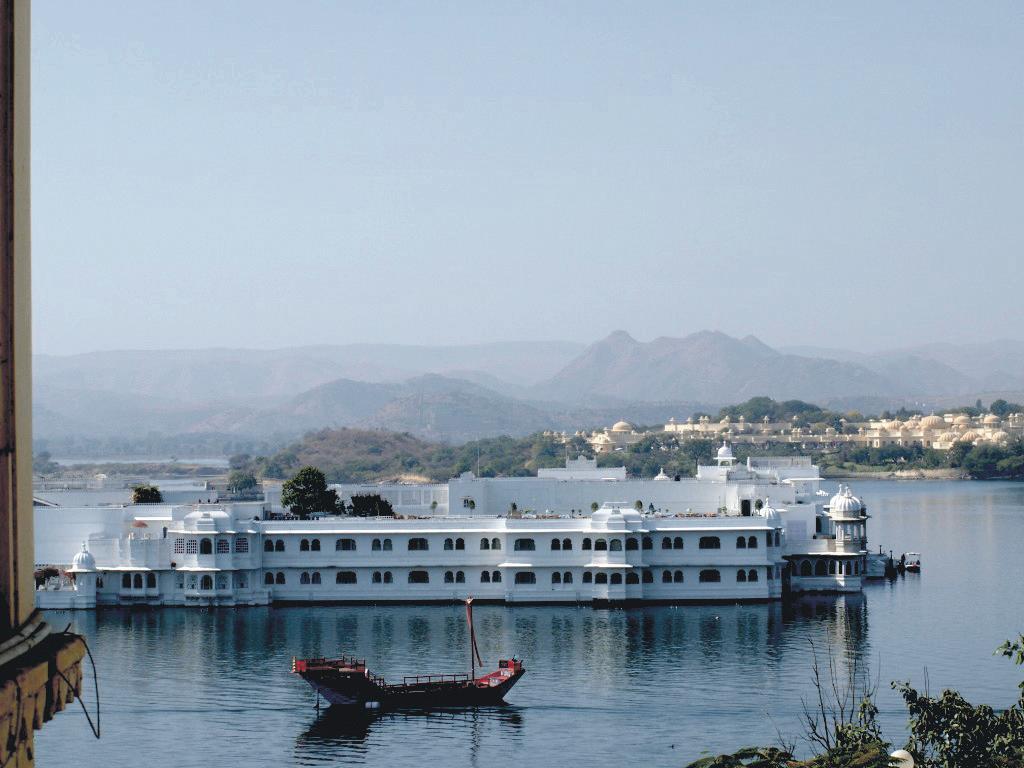
something magical in the air as I landed in Jodhpur. After we landed, I got a felling of déjà vu, although of course, I had never been there before. Maybe I have a connection with this place from another era, but who can ever be sure? And there was the army jonga waiting to pick us up. It was quite a nostalgic experience to stay in an Army Mess after so many years.
Not only called the Sun City, Jodhpur is also called the Blue City. It might have a little something to do with the unique



open sand and sand dunes greeted us, as well as breathtaking sunsets. This vision will be etched into my memory forever. We then visited one of the villages and met with the people who lived there. In the middle of this desert is a well that never goes dry, and provides the villagers with safe, sweet drinking water all year round. The whole adventure had the feel of a Bollywood flick. It culminated with a camel ride, eating an authentic Rajasthani meal, and watching a traditional Rajasthani folk dance.

28 MARCH (2) 2013 i N di A di ARY
After all my shopping was done in Jodhpur, our next destination was Mount Abu. Travelling by road, through the small Rajasthani villages, was like something out of a National Geographic road trip. Our driver took us to a Bishnoi village and the shrines there. I got to see peacocks and deer, and even a black buck. Quite the Indian safari indeed. He spoke to us about the shooting of a black buck by Salman Khan in the area, and the outrage that this created among the Bishnoi tribe.
Mount Abu was definitely a change of scenery, as we went from the desert to the chilling hill station. We visited the age old Dilwara Jain temple. This temple is made up of 5 marble temples, and has exquisite architecture that dates back to the 11th century.
Guru Shikhar is the highest point in Rajasthan (5676 feet) and has a temple dedicated to saint Dattathreya. The temple has a massive bell with 1411 inscribed on its frame. And you get an amazing bird’s eye view of Mount Abu from the top. As the sun was lowering itself, the sunset point was completely crowded with tourists. Luckily, we managed to get a good spot on the ledge of a hill. In a span of 2 to 3 days, I had the unique opportunity of watching that glowing ball of fire disappear before my very eyes, first into the sand, and then in between the mountain ranges. You can’t but take a moment to marvel on the beauty of this entire universe in moments like these. You are but a spectator.
We left Mount Abu in the early hours of the morning, and headed towards Udaipur. Before reaching the city we stopped at Moti Margi

Rajasthan




The whole adventure had the feel of a Bollywood flick. It culminated with a camel ride, eating an authentic Rajasthani meal, and watching a traditional Rajasthani folk dance

overlooking the Fateh Sagar lake, to visit one of the most famous monuments, something that left me absolutely astounded and speechless. Astride his faithful horse, Chetak, is a huge bronze statue of Maharana Pratap. I couldn’t take my eyes off him, as a feeling of awe and reverence swelled within me. The artist had captured his dignity and grace with perfection.
As we got close to the city, we got to experience its hustle and bustle. We first visited Saheliyon ki Badi in the northern part of the city with beautiful gardens and water features, and then headed straight to the Udaipur City Palace, which has plenty to see. Here, Rajputana history and tradition is on display. And then we saw the Lake Palace, which is absolutely breathtaking. Udaipur is indeed the Venice of the East. Our last destination was the Nathdwara Krishna temple. It is believed that the statue of the deity was originally worshipped in Mathura, and had to be moved to safety, to avoid being plundered by Aurangzeb. It does not have the typical temple structure, and is called the ‘Haveli of Shrinathji’. That was my Rajasthani rendezvous: fabulous, breathtaking, mesmerising, and 100% enchanting. It is true that there is magic in the air there, and it beckons you to return to be enticed time and time again. Those who plan to visit the place must do as the locals do. It is important to be a part of the sand and the stone, and hear the songs and the laughter, the war cries and the triumphant roars that reverberate from the fort walls, even today. As I headed back to Delhi, it was like moving from one era to another, because although modernity has touched parts of this beautiful state, the charm, the aura and the magical anticipation of things to come, still exist.
MARCH (2) 2013 29
Take a step back in time to visit magical palaces, temples and deserts, as the locals do
China. This relates to the population of
economy, due to its natural comfort with spoken English by Indian graduates is the reason that multinational corporations are even if it is for relatively menial work, such

detractors of the country’s growth, which dilutes the country’s advantages elsewhere. But could the rich history and tradition be another detractor from China reaching its development potential? For example, a key challenge for Chinese
within a Confucian tradition and hierarchy. Individual risk taking, and alternative thinking is not only difficult, through intense conformity.
powerful tool of enforcing
Similar issues may exist among Indians who too strictly maintain a traditional mindset. A common criticism of Indian workers applying their skills abroad is that they are excellent workers when told what to do or given a set of instructions,
reverence for tradition and conformity are
All communities from cultures distant to the dominant Anglo-Saxon variety must contend with the right balance of tradition and modernity. It can be a painful balancing conflict with children or a sense of loss about one’s past. In America, leaders of the Indian community have made no secret that powerful Jewish community balance between tradition, community consciousness
aware of one’s past. Just as my patients can’t entirely make sense of their lives
lose a moral and cultural balance if they lose a sense of their history and culture. But a weighty, old civilisation should not be rested upon for its own sake, or used
modernity and beyond.
30 MARCH (2) 2013 www.indianlink.com.au
OP i N i ON rivalry
Climatic emergencies are becoming frequent
temperatures in Britain and the middle and eastern states of the USA.
BY NOEL G DE SOUZA
There appear to be ever-continuing problems of bush fires and flooding in Australia. These are leading to the conclusion that these mishaps are annually recurring problems. Such problems did occur in the past, but with neither the same intensity nor the same frequency.
Currently (late January and February 2013) there are floods, cyclones (including several devastating tornadoes or twisters) and bush fires occurring simultaneously.
Maps which formerly indicated once-in-ahundred-years flooding problems now need to be revised to almost once-in-a-year-or-two intensity. The floods in the Lockyer Valley in Queensland occurred in 2011 and in 2013. That these problems stem from climate change is something almost no-one dares to deny today.
There have been extraordinary rainfall statistics for daily rainfall in Queensland with some areas receiving 600mm to 800mm in a single day! The rain converted roads and small creeks into swollen rivers. In Bundaberg, one of the most badly hit areas, numerous people have had to be rescued by helicopters from rooftops.
Perhaps the maligned scientists who kept futilely warning us about climatic change for over a decade, could have the last laugh. But they are not laughing at all. The scientists are awed and saddened about how right they were, how much worse and how much earlier than expected these problems have eventuated. This was evident in the talk given by the chairperson of the Intergovernmental Panel on Climate Change (IPCC) Dr Rajendra Pachauri a few weeks ago in Tasmania.
Climate change sceptics have been proven wrong, but their personal attacks on climate change scientists continue nonetheless, and relentlessly so. Christopher Booker, writing in the Telegraph, says that the Inter-Academy report into the IPCC, led by Rajendra Pachauri, “tiptoes around a mighty elephant in the room”. Now Booker says of the Nobel Prize being jointly awarded to The IPCC and Al Gore (former Vice-president of the USA): “Does this not all add up to the most bizarre and outrageous scandal in the history of the world?”
The problems of the Queensland floods can neither be blamed on its former premier Anna Bligh, nor on the current incumbent Campbell Newman. They have become the unfortunate politicians who have had to face humankind’s great disasters; these disasters contrast with the current freezing
The summer disasters in Australia are also in contrast to the monsoons lands of Asia. Whilst in Australia we swelter in temperatures between 35 and 45 degrees, in some places such as northern India, mist and rains are seen with freezing temperatures even below 0 degrees centigrade.
The lessons from previous floods in Queensland have only been partially learned. According to insurance companies, residents who had been affected in the floods of 2011 changed their policies to cover flood damage. That had not been the case earlier, and many lost possible insurance compensation. Flood insurance is good for the residents, but it does create a dent in the insurance companies’ finances.
In contrast to the ceaseless onslaught of the elements on humans and animals, the events have, by far and large, brought out the best amongst humans. Much of the work done by organisations like the Red Cross and Rural Fire Brigades includes volunteers who have given selfless service; they have endured sleepless nights and considerable fatigue to ensure that the situation does not further deteriorate. People in general working side-by-side have brought out the best of human nature in Australian society. Neighbours have cared for children and their mothers. They have ensured that the limited supplies of food and water are fairly shared.
The army has been drafted to help. This has also happened in India. The armed forces can be trained to become a civil emergency force. Helicopter rescues of persons on rooftops, such as in Bundaberg, has become the norm during intense flooding.
Australia with its plentiful deposits of metals and energy ironically lacks adequate water supplies. There may be considerable water in floods but it is contaminated with sewage and other detritus and it is not fit to drink. Floods and fires have also resulted in damage to agriculture. Vegetable food supplies are being hit. For example, Queensland which is a major supplier of several fruits (mangoes, pineapple and bananas) and vegetables (lettuce and avocado), will find it difficult to supply these fresh products. Sugar production will also be reduced because of cyclone damage to sugar plantations. Heavy rainfall has hampered coal production, and along with minerals like uranium, mining has been hampered in northern Australia due to mine flooding. Coal exports go to Asia, including to India which is a major buyer.

Amongst other mitigation measures, budgets should set aside substantial yearly amounts to deal with climatic emergencies given their frequency.
HYUNDAE IMMIGRATION CONSULTING Michael Choi
Dear Customers,
We are offering our immigration service for all Australian temporary and permanent resident visas at affordable prices. The visa types and migration services we are dealing with are:
Temporary Visas:
Graduate Visa, 485, ‘Recognized Graduate Visa 476’ Business Long Stay 457, Religious Worker, Student Visa
permanenT resiDenT Visas:
Skilled Migration, Partner/ De-facto Relationship, Child, Carer, Business Migration, Distinguished Talent, Parent, Aged Parent, Aged Relative, Remaining Relative, ENS, RSMS.
other migration service: Protection Visa, RRT, MRT, etc.

opening Hours: Mon – Fri 9:30 to 6:30
Contact: Michael CHOI MA.
0414 888 778, (02) 9746 3233

4A Level 3, 11 The Boulevarde Strathfield NSW 2135 (Strathfield Shopping Plaza) email: hyundaecon@naver.com
3 hours free parking available at Strathfield Shopping Plaza.

MARCH (2) 2013 31 nAtionAl edition
OP i N i ON
Climate change sceptics have been proven wrong, but their personal attacks on climate change scientists continue nonetheless, and relentlessly so
With each passing year, the consequences of climate change become more obvious and serious
MARN 9792567



32 MARCH (2) 2013 www.indianlink.com.au
Listening to women’s voices
International
Women’s
Day shines a light on gender inequality in the modern day
BY NIMA MENON
Earlier this month was International Women’s Day, and every year there is a slightly different focus. Women from around the world choose this day to speak out about the injustices and oppression that they face on a daily basis. Even in the 21st Century there are numerous stories of gender inequality. But it is through these adversities that the strength of women is revealed. Like a modern day version of ‘Girl Power’.
Of the many stories that have caught global attention, is the courageous Malala Yousufzai, who stood up to the tyranny of the Taliban. Malala became the voice for millions of young girls and women who live a life of oppression. By doing this, she became the youngest ever nominated for the Noble Peace prize. This young Pakistani Red Riding Hood refused to be intimidated by the Big Bad Taliban Wolf.
In horror stories around the world, women are being mutilated by having acid thrown onto their faces. It is interesting to note that men do this as an attempt to break
a women’s spirit, by scarring her external beauty. It is assumed that a disfigured woman is going to stay indoors.
In other stories, young girls are married to much older men who prostitute them as a way of making a livelihood. While girls in the past have succumbed to their fate, some girls refuse to sell their bodies, despite being starved and beaten. In one story, Sahara Gul was sold by her parents to repay their debts. But this young 15-yearold refused to lead the life of a prostitute.
In India, a girl had to be brutally raped and murdered for a country to stand up against this kind of brutality that has been going on for centuries. There has been a tremendous outpouring of public grief worldwide in response to Nirbhaya’s death. Her father, while mourning his irreversible loss, hopes to see a rapid decline in violence against women. She was posthumously given the Rani Laxmibai award and the International Women of Courage award. This crusade, this awakening, has to retain its momentum to continue spreading the message that such horrific acts will not be tolerated.
It is unfortunate that India and China, who are seen as future leaders of the world economy, feature among the ten worst countries in the world for women.
Despite India having had so many powerful female protagonists, there are still isolated pockets of the population that degrade and condemn women, even using them as tools of sexual gratification. In China the ‘one child’ policy has taken away from women a basic right, which is the right to bear children. It is believed that in the Democratic Republic of Congo rape is used as a weapon of war. It is beyond belief that in today’s day and age we have something called the ‘rape capital of the world’. There are amazing stories of women and resilience. We have it in us to stand up against injustice and inequality. We have fought against the odds and won several times. All the male perpetrator has is his physical strength and an uncontrollable libido. The question is should we let something as trivial as that overpower us. Women have more resilience than they would give themselves due. They have to shun away from emotional blackmail and bondage. A woman does not need a man in her life for completion and fulfilment if he is one who does not respect her and stifles her growth as an individual.


Today we may have some very powerful women in the social and political arena like Angela Merkel, Michelle Obama, Hillary Clinton, Sonia Gandhi, Melinda Gates, Christine Lagarde and
Oprah Winfrey. Hillary Clinton has spoken about her travels to male dominated countries and acknowledges that she is only entertained as she is the Secretary of State of the USA. We are still not living in a world where daughters are valued the same as sons and encouraged to a make the same meaningful contributions to their society and the world they live in. Equal rights for women is still a debatable subject for the papacy: even today priesthood is a man’s domain.
After years of abuse and subjugation, women and girls around the globe are saying “Enough” and we are kidding ourselves if we think that women are less respected in the developing world. In fact, the plight of women is no better in the socalled progressive countries. So after another year celebrating International Woman’s Day, what have we achieved? Have we moved a step further in emancipating the state of women or do we just continue to be remorseful, talk about it and empathise with the plight of those who are not as fortunate as we are. I am looking forward to the day when there will be no International Woman’s Day, for that would mean that we share the same pedestal with men and don’t have to be the topic of a discussion. Jai Ho to Girl Power!!
A woman does not need a man in her life if he is one who does not respect her and stifles her growth as an individual
MARCH (2) 2013 33 NATIONAL EDITION
womEn
All the male perpetrator has is his physical strength and an uncontrollable libido. The question is should we let something as trivial as that overpower us


34 MARCH (2) 2013 www.indianlink.com.au Phone 0404 420 426 Email info@curryart.com.au Website www.curryart.com.au CurryArt C ATERING SERVICES Birthday/ anniversary parties, Bollywood party, Office catering, Functions, Poojas We’ll make your day memorable Top taste. Top Quality. Best prices Can cater up to 100 people
Tiger tiger burning bright
BY ANITA PRAKASH

We had spent the afternoon in the Bandipur National Park near Ooty, and were now about to head back to our rooms at the hotel. Although we had seen and photographed much wild life in the past few hours, we were a tad disappointed - the tiger, which is what we had really come to see, had remained elusive.
As we turned onto the highway leading out of the jungle, the driver from a vehicle on the other side of the road yelled “TIGER!” Our driver stepped on the gas as our heart beats quickened. We had only just recovered from the quick braking, when a beautiful tigress emerged from the bush and walked towards the main road.
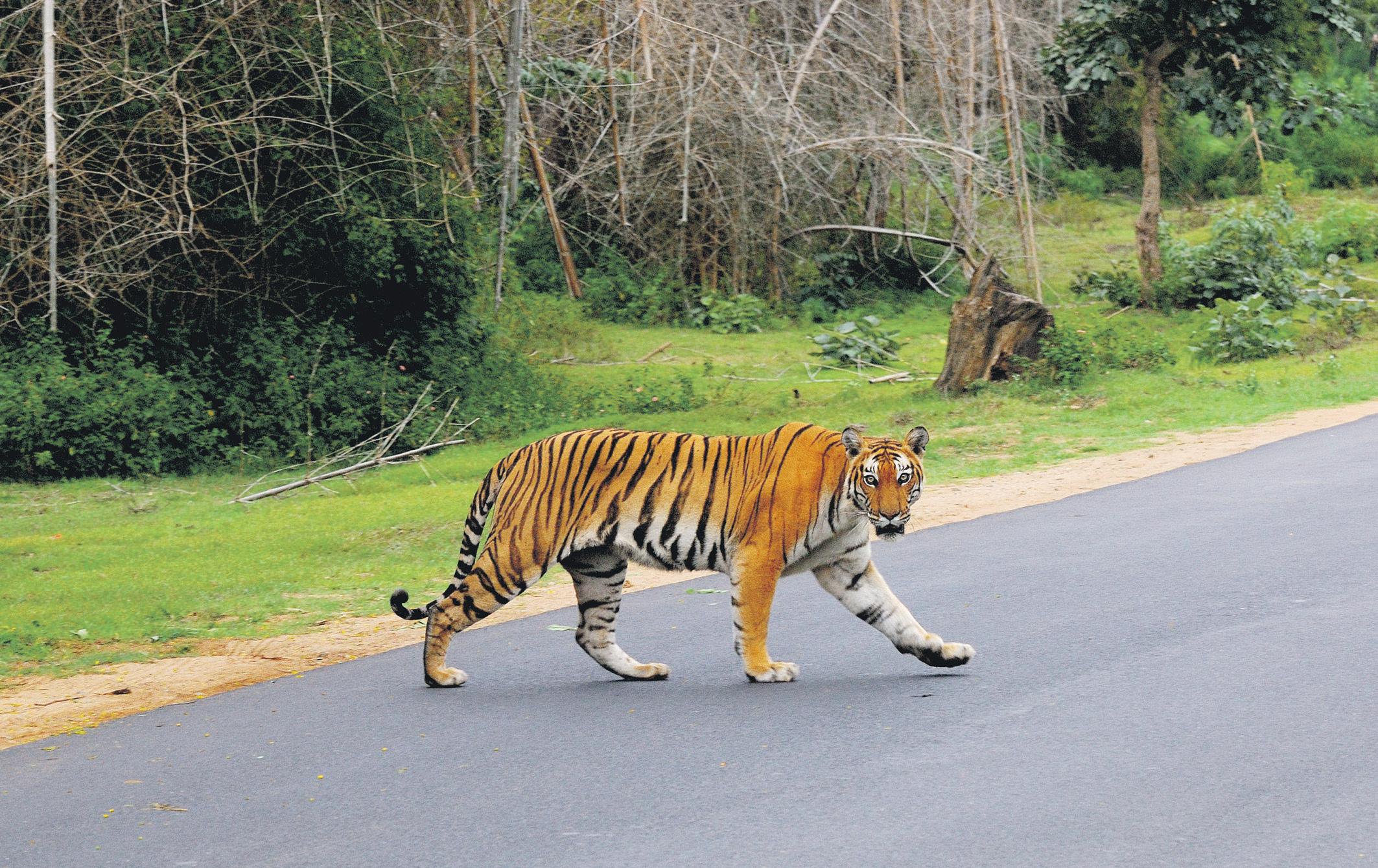
I felt a rush of adrenaline, as time suddenly slowed down. I only had eyes for the tigress. We knew it was a fully grown female by its size and more obviously, the family jewels were missing. She crossed the road in no hurry whatsoever, and I tried to get her in focus on my camera, which was shaking in my trembling hands. Suddenly it was all quiet, and the majestic striped beast looked surreal in her surroundings. She was graceful in her gait and even looked straight at us for a moment, while I rattled off a few more shots from my Nikon.

She crossed the road, and casually walked back into the bush, and out of sight.
Our encounter lasted all of two minutes, but it felt like an hour.
Later, I counted no less than 15 shots on my camera. The whole experience was out of this world and remains etched deeply in my memory. We returned thrilled to our core, especially my parents who were visiting Bandipur National Park for the first time.
My hubby Prakash smiled as I cradled the camera protectively. These pictures of the tiger in the wild will stay with us for life.
The Bandipur wildlife sanctuary is approximately 240kms southwest of Bengaluru in the state of Karnataka. The Bandipur National Park spans an area of 870 sq kms of dry, deciduous forest, and is home to many endangered species. According to the latest wildlife census, there
settlements and elephants battle for space, which takes a toll on these majestic beasts. The main road to Ooty, which has witnessed ghastly accidents involving wildlife, has thankfully been closed in the night for some time now.
On our adventure, we drove along on a jungle trail that wound through the wildlife sanctuary, with its hidden fauna amidst
as we approached each bend in the track, because, at this point, we were still looking for a sighting of the elusive tiger. After a long bumpy ride we also came across a family of langurs playing and chattering. The driver stopped at my request, and we managed to capture as many antics of these beautiful monkeys as we could, on camera.
bumps. And though I have seen tigers in the wild many times before, this was the first time I managed to take pictures. My tiger turned out to be graceful, majestic and breathtaking, to say the least. This beautiful animal needs to be preserved in its natural habitat for all generations to come. Tigers are awesome indeed, long live Sher
Khan!
We knew it was a fully grown female by its size and more obviously, the family jewels were missing
the most amazing nature experiences – mine certainly gave me goose bumps
MARCH (2) 2013 35 nAtionAl edition
W i L d L ife
Of all the creatures in the world, the Indian national animal is among the most majestic, graceful and awe-inspiring
The lost art of communication
BY SAROJA SRINIVASAN


In an age that’s drowning in a sea of communication devices, we still often hear about a lack of communication. It’s the impersonal nature of this electronic communication that relays private matters that can create major conflict. There is an endless amount of miscommunication that often leads to misunderstandings. Whether it is between parents and children, husbands and wives, employers and employees, there may be a lot of talk, but somehow
each party seems to feel that they have not been heard. This begs the question, ‘Have people lost the art of communicating’?
Communication is the process of conveying facts, ideas, attitudes and opinions from one mind to another. The word ‘mind’ is used to emphasise the basic issue in good communication. It is not just what we see, hear, or read, that starts the process of communication. The fundamental motivation in communicating effectively is to ensure that the person who receives the communication understands it the way it was meant.
Communication may take a verbal form (words) and/or nonverbal forms (gestures, stance, tone of voice, etc.) We know that

there is effective communication occurring when the speaker is aware that they are understood by the receiver’s response. This could be through words, or gestures, or both. The sender and the receiver of a message have an equal role for anything to be effectively communicated. Often in disagreements, one is ‘blamed’ more than the other. Either the sender is seen as not being clear, or the receiver is seen as not having understood the message. In fact, both could have contributed to the miscommunication. Everything we do, or do not do, say or not say, is communicating something very powerfully. It is a myth when people say that some people never actually say anything. The fact is that they are also
conveying something powerful by not saying anything. Inaction, or keeping silent, can just as easily convey meaning as effectively as words do. This can be either in agreement or disagreement with what is being said, and can sometimes even convey meaning more effectively than words. It is commonly accepted that in overall communication only a small percent is verbal and a very large percent is non-verbal. Yet a lot of conflict arises from just the very words that are used. When we look at it more closely, we find that the words, though appropriate, were expressed in a certain way that gave rise to the misunderstanding. The nonverbal accompaniments that went with the words seem to be far more powerful than just the words themselves. In everyday miscommunication, the influence of the nonverbal component is often far greater than the verbal. The most common mistake is when the words do not match the action, and the tone of voice. An example is when a person uses a sarcastic tone. The receiver of the communication perhaps has missed the non-verbal aspects like the tone of voice, body language, and eye-contact, and reads the intent of the speaker completely differently to what was intended. This can then start a series of misunderstandings and arguments. In effective communication, what the speaker intends and what impact it has on the listener has to be equal. Intent = impact. To have effective communication, a good speaker states what they want, feel and think clearly and precisely, and a good listener picks up on the meaning of the speaker, without making guesses. This is all very well in theory, although in practice there can be many pitfalls, which we may not be aware of at the time.
Intent = impact
This is because the context of each piece of communication has many sides to it. It depends on who is communicating, for example, if it’s a child, a person in authority, a stranger, if they’re from a similar culture, the context, mood of the persons involved, and many more. It is very easy for miscommunication if any of these points above don’t match up, but even if they do, there is still room for error. It’s about being aware of this and trying to improve your own communication skills. It’s time to start practicing.

36 MARCH (2) 2013 www.indianlink.com.au
P s YCH e
Both spoken and unspoken words can lead to accidental misunderstandings
Inaction, or keeping silent, can just as easily convey meaning as effectively as words do
In effective communication, what the speaker intends and what impact it has on the listener has to be equal.


MARCH (2) 2013 37 nAtionAl edition
There’s a spa in your kitchen
Simple domestic remedies can lead to clear, glowing and healthy skin


he world is turning to holistic remedies and natural ingredients –whether it is diet supplements, pain relievers or beauty products. In India we have always had an innate knowledge about natural remedies. So in a two-part column, I will give you a list of fruits, veggies and oils you can use to enhance your beauty. And the best part is, these are things that can be found in everybody’s kitchen.



Coconut
This ingredient is vital to south Indian cooking, and long, lustrous hair has always been synonymous with regular massage of coconut oil. You can use coconut oil to also heal cracked heels and chapped lips. The natural emollients found in coconut oil reduce dryness of the skin. Take a tablespoon of coconut oil and massage it into your heels. Wear socks and leave on overnight. Doing this regularly will soften the skin and reduce cracks.
Keep a tiny bottle handy by your bedside with some coconut oil in it. During winter when your lips get dry and chapped, apply a little coconut oil on them before going to bed. Another great benefit of coconut oil is that it can also be used for a full body massage to reduce dry skin.
Avocado
Though we don’t use it in our cooking, living in Australia means you do include this fruit in salads when it is in season. Avocado has known benefits that help the female reproducing system and it is full of good fats.
It is also good when used as a face mask. Take some ripe avocado, mash well and mix with two teaspoons of honey. Apply on the face and neck and leave on for 20 minutes. Rinse off and you will find your skin looking much softer and plumped up. That is because of the natural oils in avocado and the moisturising effect of honey.
Banana
Another ubiquitous fruit, always a staple in most homes, is the humble banana. If one is getting overripe, don’t throw it away. Instead mash half a banana, mix it with some yoghurt and warmed
up honey, and apply over the face and neck. Leave on for 15 minutes, then rinse it off first with warm water and then with cold water to close the pores. You will find that you have softer glowing skin.
Aloe vera
Several people have aloe vera growing in their gardens, but few are aware of its beneficial properties. If you scald your skin or have sunburn, just snip off some aloe vera and apply the fresh gel that oozes out onto your skin for instant relief. It has soothing and moisturising properties. You
During winter when your lips get dry and chapped, apply a little coconut oil on them before going to bed
use some overripe ones for your hair if you plan to throw them away. Just mash a few strawberries and mix with a tablespoon of mayonnaise. Apply on the strands of your hair like you would apply a conditioner, then wash it off after 30 minutes with shampoo. Try this once a month for a glossy mane.
Almonds
could apply it in this natural gel form on your face on a cold winter’s day to relieve dryness of the skin. For a mask that gives you glowing skin, take a teaspoon each of honey and milk, a pinch of turmeric and a few drops of rose water. Add aloe vera gel scooped out from the leaf and apply the pack on to your face. Leave on till it dries up, wash off and see the difference.
Strawberry
Now most of us like to eat this fruit with cream or blend it with milk and yoghurt, but you could
Yes, these nuts are expensive and one would much rather eat them. But the ones that have gone bitter or old, could make a very good face pack. Grind the almonds and mix with a teaspoon of dairy whitener and water. Make a paste and apply onto your face and neck. Let the mask dry and harden, leaving it on till it feels tight on your skin. Splash water on your face to wash off. Do this for a week at a stretch, and you’ll find that it removes unwanted blemishes and patchy tanned skin, and leaves your skin soft to touch and glowing. I do this everyday, so I can vouch for it.
38 MARCH (2) 2013 www.indianlink.com.au
b e AU tY
MINNAL KHONA
ServiceS Offered Business Sponsorship Business set-ups Business Strategies Marketing Strategies Business Seminars And More….. contact: Hanish – 0410 901 906 Bill – 0450 567 884


MARCH (2) 2013 39 nAtionAl edition
Quince, kumquat… what’s that?

Unfamiliar fruit and vegetables can still find a way into our cuisine and help us discover new, exciting flavours
retaining the liquid; allow to cool. Discard rind.
BY SHERYL DIXIT

Iwas never a fan of the sabji mandi back in India, but then, I didn’t have to cook for a fussy family. That’s changed now that we live in Australia, and my wanderings through aisles of fruit and vegetables have yielded unusual finds such as asparagus, quince, celery, kumquat, persimmon and tamarillo, to name a few. These were only familiar to me through cookbooks and cooking shows.
But now, I am slowly experimenting with these exotic offerings, and am finding ways to introduce them into our daily cuisine. It’s a bit off the traditional track, but these easy to cook recipes enhance our daily cuisine. And the results have been interesting and surprisingly pleasurable.
Quince tart
This makes a great teatime treat or even a dessert, as quince is a more exotic substitute than the trustworthy, humble (and boring) apple

For the pastry
1 lemon
1 cup wholemeal flour
¼ cup white sugar
70 g butter, softened
For the filling
About 500g quinces
1 orange
½ cup apple juice
2 tbsp white sugar
¾ cup slivered almonds
2 eggs
2/3 cup cream cheese or mascarpone cheese
1 tbsp honey
1 tsp ground cinnamon
Grate half the lemon and place rind, flour, sugar, 2 tbsp water and the butter in a bowl. Knead to a smooth dough and add more water if needed. Take a 26cm cake tin and line with pastry, shaping an edge 2.5 cm high. Chill in the fridge for 30 minutes.
Next, preheat the oven to 200 degrees C. Quarter, peel and core quinces and cut into slices of 1cm thickness. Peel a few thin strips of rind from the orange. Then cut it in half and squeeze out the juice. In a saucepan, bring juice, rind, apple juice and sugar to a boil. Add quince slices and poach over low heat for 15 minutes. Strain,
Remove the chilled pastry tin from the fridge and sprinkle the almonds over the pastry base. Prebake the pastry for 15 minutes. Reduce heat to 180 degrees C. Place quinces on the pastry base. Whisk the reserved cooled cooking liquid with the eggs and cream cheese; pour over the fruit. Bake for a further 30 minutes.
Combine honey and cinnamon. Spread over tart. Leave tart in the turned-off oven for 10 minutes. Gently remove pastry from tin after thoroughly cooled. Serve and enjoy.
Asparagus and chicken Thai green curry
This traditional curry takes on a flavour of its own with asparagus, combining the richness of the vegetable with succulent chicken. A delicious treat, not for the weight-conscious.
2 tbsp sunflower oil
700 g chicken breast fillets, cut into 2cm cubes
1 large onion, finely chopped
2 garlic cloves, crushed
1 lemongrass stem, outer leaves removed, quartered lengthways
4 tbsp green curry paste
300 ml coconut milk
1 cup (250ml) chicken stock
2 tbsp green peppercorns (soak, if dry or drain, if bottled)
2 kaffir lime leaves
1 bunch thin asparagus, woody ends trimmed, halved Fish sauce (optional, to season)

Coriander leaves, finely chopped
Heat oil in a wok or a thick-based saucepan on high heat. Stir-fry chicken cubes in batches, until golden all over. Place in a bowl and set aside. In the same wok, add onion, garlic and lemongrass, and stir-fry for 1 minute. Add the curry paste and cook, stirring, for a further minute. Return the chicken to the wok and add the coconut milk, stock, peppercorns and kaffir lime leaves, then bring to the boil. Reduce the heat to medium and simmer for 2 minutes. Add the asparagus and cook for a further 2 minutes or until bright green.
Season to taste with fish sauce. Sprinkle chopped coriander leaves before serving. Serve hot with basmati or steamed jasmine rice.
Gourmet kumquats chutney circles
This is a great dish with a touch of Indian spices to serve up as an hors d’oeuvre at a party. Kumquats are the smallest of citrus fruit with a sweet skin and zest, but a tangy and mildly bitter inside.
1 tbsp sunflower oil
1 red onion, finely diced
½ tsp dried red chilli flakes
½ tsp black mustard seeds
½ tsp ground cumin
½ tsp turmeric
4-cm cinnamon sticks, snapped in half
500 g kumquats, sliced in half lengthways
65 g light brown sugar
120 g sherry vinegar
1 sheet of puff pastry
Heat the oil in a heavy-based saucepan on a moderate heat, and add the red onion. Fry for 2-3 minutes until the onion has
Add the chillies, mustard seeds, cumin, turmeric and cinnamon to the pan. Continue frying for a further 2 minutes. Drop in the kumquats and cook for 3-4 minutes, until just beginning to soften. Add the brown sugar and pour over the vinegar, while still on the heat. Cover, and
simmer for 8-10 minutes, until the kumquats have completely softened and lost their shape. Remove the lid and continue boiling for a further 6-8 minutes until the juices have cooked down and thickened.
Remove the pan from the heat and leave to cool.
Allow the puff pastry sheet to soften slightly, then cut into shapes of circles, squares or stars with cookie cutters. Place shapes on a baking tray and bake at 200 degrees C for 8-10 minutes until the pastry has risen slightly. Remove from the oven, place a portion of the kumquat chutney in the centre of each shape. Return to the oven and bake for 10-12 minutes until the pastry is puffy and cooked through. Remove, cool and serve as a delicious hors d’oeuvre.
Can also be served separately with dipping pita bread or on chappatis.
40 MARCH (2) 2013 www.indianlink.com.au f OO d
1. When you sign up a 2 year contract of mobile phone service on a $30 plan or above in our store

2. One voucher/per service, the more you sign, the more you get.

3. You can redeem the voucher only for mobile phone accessories in store
4. Gift voucher is not redeemable for cash
5. To qualify for this offer, you must mention this advertisement before signing up.

6. Offer ends May 30, 2013 unless extended
7. Gift voucher is valid for 2 years from the date of issue.

Notes:
We carry a wide range of mobiles avaiulable on contract, prepaid and we also offer competitive pricing for outright purchase, for details, please visit our shop.

MARCH (2) 2013 41 nAtionAl edition Suite 1, 71 A Macquarie street, Parramatta. Phone: 0411 520 546 02 9687 9741 For expert coaching in • Money completely refundable, if not satisfied with the first tuition session. • Lowest fee Guaranteed.
Power packed sessions *Conditions apply ( enquire before enrolling). ENGLISH GURU www.englishguru.com.au IELTS Guarantee Course* or One / Two Weeks Crash Course Enrol today in the Band Score
•
$150 shop gift voucher conditions:
$150 SHOP GIFT VOUCHER
9749 7688 or 9749 7655 Image for illustration purposes only
Ph:
Coast to coast
A train journey on the legendary Indian Pacific from Sydney to Perth offers both history as well as beautiful landscapes

oddly operated on different gauges which meant passengers
Just before Christmas every year, Australian rail icon Indian Pacific becomes an Outback Christmas train, spreading the “festive spirit” across Australia covering the transcontinental distance of 4352 km from Sydney to Perth.

For Great Southern Rail, the owner and operator of this legendary train, the annual event is all about thanking the communities along the route for their long standing support. For us, on the other hand, it was about rolling in luxury for 65 hours with Santa Claus and singer Brian McFadden, the Irish born entertainer, on board, performing for his fans in free concerts at wayside stops.
Unlike Europe and Asia, long distance travel by train is not popular in Australia; most prefer to either drive or fly as these modes of travel are perceived to be more convenient and comfortable. However travelling on the Indian Pacific or the Ghan, which connects Adelaide with Darwin, are exceptions. They are not journeys to reach destinations but more of life-time experiences, moving in luxury and simultaneously enjoying the spread of a large country.
Since colonisation, railway tracks in each Australian state
traversing interstate had to change trains at the borders, making the journey inconvenient and time consuming. However history was made in 1970 when a single gauge track was laid between Sydney and Perth. Considering the distance and the rough geographical terrain in between, you will agree that this was an all-time great feat of engineering. And the date 23 February when the Indian Pacific made its maiden journey across the continent, will remain a red letter day in the annals of Australian Railway. There were huge celebrations along the way on this day, as the Indian Pacific emerged as a symbol of national unity connecting colonies of the east to the west. The name of the train comes from the two great oceans it links, the Indian and the Pacific.
It soon earned the reputation of being one of the planet’s greatest train journeys, providing a rare window into the outback of Australia: from the pictureperfect, lush green Blue Mountains, through the Great Dividing Range, to the salt lakes and sand dunes of South Australia and a passage over the longest stretch of rail track in the world that runs straight, the 478 km across the Nullarbor plain (Nullarbor in Latin means ‘no trees’).
The Australian experience does not merely pass by the train

such as Broken Hill, Adelaide, Kalgoorlie and the remote outback town of Cook which currently boasts of a population of four. Exploring these places provides a unique opportunity to appreciate the remoteness and rich history of outback Australia, something that can’t be achieved easily by other means.

We departed from Sydney’s Central Station at 3 pm and soon the concrete silhouettes were replaced by the shades of green with gum trees on the hillsides and rolling valleys of the Blue Mountain region. Late evening we reached Bathurst in the Central Tablelands of our state and witnessed the first concert of the tour. Brian and his guitarist Robbie were fabulous; within a short time they had the eagerly waiting audience engaged, a large fraction of whom were kids, equally anxious to shake hands with Santa and receive their lolly bag.
Similar events were held at Broken Hill, Adelaide, Watson, Rawlina and Kalgoorlie. At Broken Hill - often tagged as the Silver City because of its position as a major producer of silver, lead and zinc - optional sightseeing tours are available to learn about the town’s rich mining history.

This is also an option at Don Bradman’s city, Adelaide which is dotted with colonial buildings, churches, gardens and cricketing ovals. In Adelaide, the concert was held at the Royal Flying Doctor
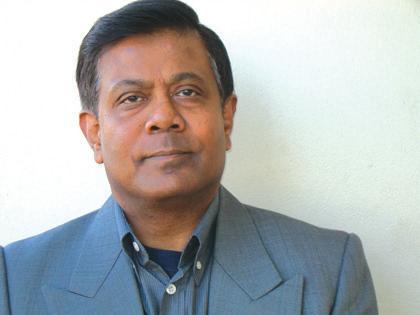
inspiring stories of how RFDS saves life and provides medical support in remote Australia.
As soon as the doors open at Kalgoorlie, many passengers rush to nearby Hay Street lined with vibrant pubs where weary mine workers relax with a beer after a hard day’s work. Tours are available at this gold rich town too, where the discovery of the precious metal in the 1890s heralded a population explosion as fortune seekers from round the globe descended there to cash in on its natural bounty.

At Cook, once a thriving railway settlement, now one of the world’s most isolated outposts, passengers who can bear the extreme desert heat quickly surf through the scattered, lonely buildings, one of them being a wooden cell where prisoners awaiting death sentence were locked in.
The Watson stop, located in the middle of nowhere before entering the Nullarbor Plain, had celebrations of a different kind. Here the crowd largely comprised of indigenous people who had travelled hundreds of kilometres from nearby townships to get a feel of the forthcoming festive spirit. Many came the night before and camped. It was nice to see the children of the soil, many of whom did not speak any language other than their own, mingling with the big city dwellers as if some sort of magical reconciliation was taking place. Santa from the North Pole
An odyssey with the Indian Pacific comes as a true discovery, with something new and diverse greeting your eyes the moment you throw open the window curtains. At one time it’s the greenery of verdant terrain, which is soon replaced by the spread of yellow grass followed by a red and barren panorama intermittently dotted with pockets of green shrubby. If luck permits you may spot outback wildlife - running kangaroos, resting emus and ferocious dingoes, even Arabian camels. These camels were imported from Afghanistan in the early 19th century for carrying goods, but now off duty, have blended into the blur of the desert sky. Chasing the sun plunging into the western horizon becomes the highlight of the voyage as the changing colours outside from golden yellow and crimson red to light purple and grey became a feast for the eyes.
The three days of train travel is great to relax and charge your batteries. If at any time the panorama outside gets boring, you can bury your nose in a book or attempt to make new friends by socialising over a drink at the lounge, with fellow travellers from different parts of the world.
As claimed by many, train travel is all about the experience and after getting off at Perth I had no hesitation to give that notion a
TRAVEL
SANDIP HOR
coast by rail
Anti-clockwise from far left:
The Gastronomical delights served at the Queen Adelaide Restaurant
Meeting the locals
Sparsely populated Rawlinna station

Brian McFadden leads the Christmas carols for local kids

A hot game of golf for Santa in Watson

Indian Pacific through Outback Australia

The Indian Pacific winds through the Australian outback Exchange Hotel, a famous Kalgoorlie pub

Welcome to Gold Class
The Australian experience does not merely pass by the train windows. Passengers have the opportunity to explore historic settlements along the route such as Broken Hill, Adelaide, Kalgoorlie and the remote outback town of Cook which currently boasts of a population of four



Travel noTebook
The Ind I an Pac I f I c
Tr A in i nform AT ion
While the cruise ship I travelled on no longer operates, the highly recommended Assam Bengal Navigation’s Sukapha does, an experience I find not dissimilar to travelling with friends. Assam Bengal Navigation operates cruises from Kolkata to Farakka on the Hugli, and from Farakka to Patna on the Ganges. The cruises may be taken separately or combined. The Sukapha is compact at 40 metres long and with a maximum of 24 guests; it maintains an onboard ambience convivial to relaxation. Cabins are spacious with a lounge, dining and observation deck for viewing the passing scenery. Contact: India: Assam Bengal Navigation Co. Tel: 9192070 42330 E-mail: sales@assambengal.in Website: www.assambengalnavigation.com
Indian Pacific departs from both Sydney and Perth twice a week (during high season) and takes 3 days and 3 nights to reach end points. Depending on the number of booked passengers, the train length can vary from a single train of 15 carriages (427 meters) to a double train with 22 carriages (770metres) plus locomotives and motorail.
Tr A in ACCommodAT ion
There are three categories to suit every taste and budget from Platinum and Gold in the luxury end to cost effective Red which offers both sleeper and just seats for the budget conscious. The ticket for Platinum and Gold services includes superior sleeping accommodation, en-suite, complimentary toiletries, magazines, 24 hours tea and coffee and the facilities of a nice lounge as well as elegant dining in the Queen Adelaide Restaurant.
P er TH inform AT ion
Western Australia’s dynamic capital city is a place to be seen. Stay at Medina Grand (www.medina.com.au) close to many of the must see and attractions more info www.greatsouthernrail.com.au
MARCH (2) 2013 43
SeeKing groomS
Well settled/professional alliance invited from Australia/India for 41/165 unmarried charming Punjabi Khatri girl, family oriented and responsible, IT professional, working in Sydney. Australian citizen. Early marriage. Can relocate. Serious proposals only. Email profile with recent photo: sydgirl09@gmail.com
Hindu Garg Agrawal NRI parents of Sydney-based NZ citizen daughter 38, 5’ 3”, well educated, IT professional, seeking qualified, well-educated Hindu professionals; daughter willing to relocate please respond: sashti@globalmatri.org
Well-settled Indian family looking for a suitable match for their 23-year-old dentist niece from India, Hindu, Punjabi, height 5’1”, looking to settle in Australia. Will be visiting Australia in July. Reply to goodnewsmarry@gmail.com
Suitable match for beautiful, slim, Hindu girl, 29th July 1981, 5’5”, graduate from P.U. Chandigarh, Diploma in fashion designing. Working in Sydney, Belongs to a business family, brother well settled in Sydney, running own business. Looking for good looking, clean shaven, Permanent Resident / Citizen boy. Please contact with photo and details at: funny_mints@yahoo.com ; +919417072965 (India); 0422 669 082 (Sydney)
m AT Rimoni AL s
Match in Tricity or Sydney for girl working in convent school, 5’ - 1”, April 1987, M.Sc. IT, B.Ed., PGDCA, elder sister married and settled in Sydney. Details 9988211362, 0430 172 569.
Seeking Sikh boy, ready to settle in Sydney, for very beautiful slim girl 27/5’7” working in MNC, high income. Elder sister married, parents well settled in Sydney Australia. Contact with photo at sukhikaur2013@gmail.com
Seeking suitable match (from Australia, never married) for Hindu girl, 35 years, Chartered Accountant (non-veg), living in Australia over 25 years, with eastern and western family values. Please email with all details on ganesh2011v@gmail.com
Suitable well-settled/professional match for Punjabi Arora beautiful, never married, 39/166 qualified IT professional. GSOH with good family values. Brought up in India. Working in MNC Sydney. Australian citizen. Early marriage. Serious enquiries only. Email details with photo: ausgirl101@gmail.com
Suitable Saraswat Brahmin, MBA, CA, Dentist or professional with at least 5’ 9” tall match for our daughter, aged 30, slim, beautiful, 5’7” tall with fair colour. Graduate from well reputed university in accounts and commerce, further studying MBA. Ours is a well settled family. Contact partnersearch2707@gmail.com

SeeKing BrideS
Seeking bride for 31-yr-old, BTech, software professional, worked in USA , recently gained Aus PR, moving to Aus, currently working with TCS Mumbai, never married, belongs to God fearing cultured family. Please send details to: sandeepsinghnz@yahoo.com; phone: 0466 971 880.

Match required for 27-year-old good looking boy 6’4”, Australian citizen, working in a steady job as Records Officer earning modest salary, living in Sydney, students studying in Australia also are welcome to send their profile. Email at bahsyd8591@gmail.com
Seeking suitable match for 37 years, good looking Gujarati Brahmin boy, 5’7” Australian citizen caste no bar. Born and brought up in Mumbai, India and moved to Sydney 5 years ago. Please email with details on ravi_p100@hotmail.com
Match required for a 48-yo, slim, clean shaven, Jat Sikh Aust PR living in Melb, working for a Bank, own house. I have no children but I don’t mind if she has children. Genuine enquiries only email: jat_sikh@hotmail.com
Single tall man, often travels with work, desires to meet attractive good character single or widow lady over 40 with a view to marriage. Apply PP GPO Box 2336 Adelaide, South Australia 5000.
44 MARCH (2) 2013 www.indianlink.com.au
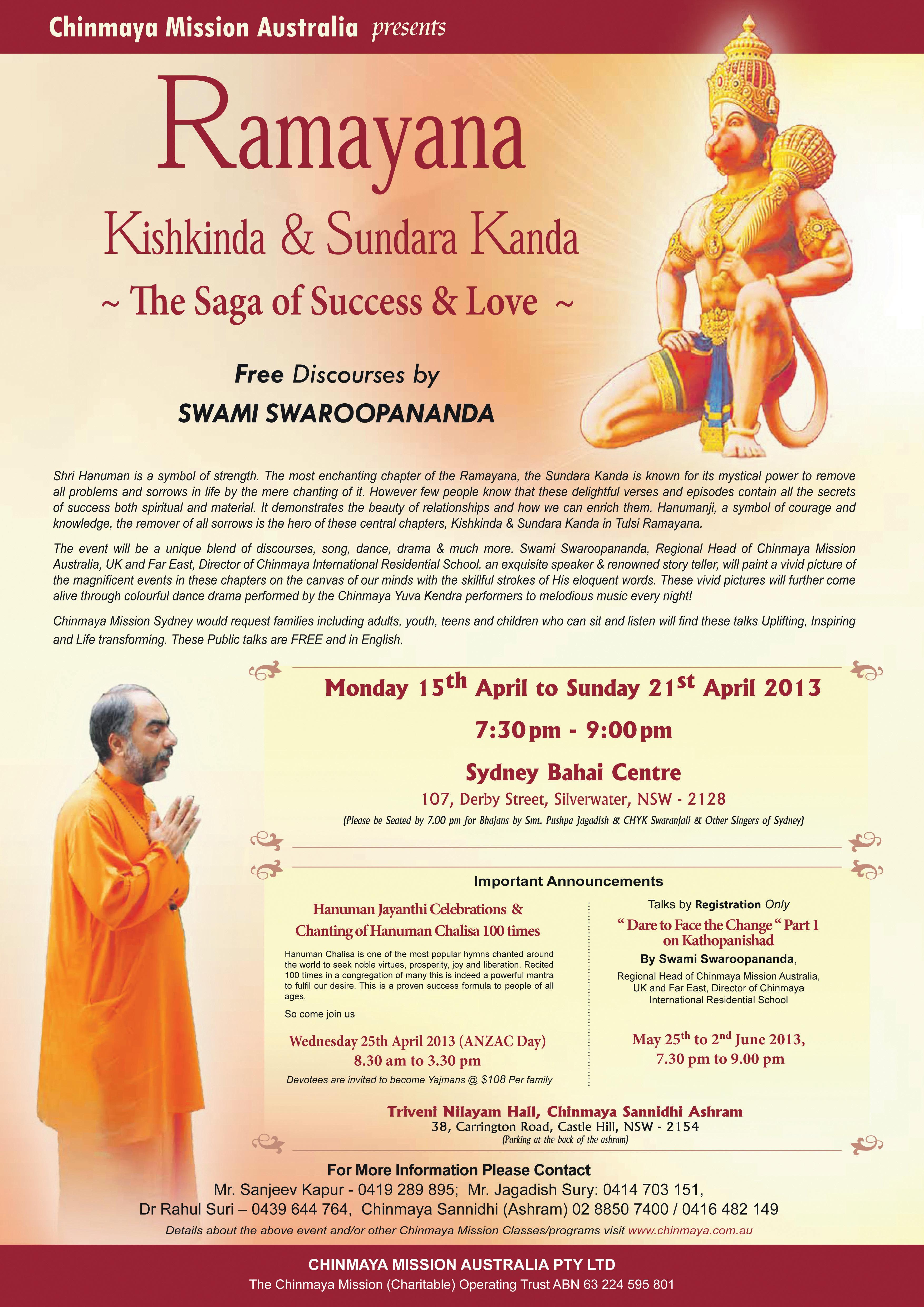
MARCH (2) 2013 45 NATIONAL EDITION
A plea from Holi

An aura of distaste and contamination has enveloped the beauty and innocence of the festival of colour
 BY RANI JHALA
BY RANI JHALA
Iam Holi, the festival of colour.
For centuries, I have welcomed the season of spring with my gaiety and hues. I fostered communal harmony as the nation came together to celebrate. I was a favourite with children and I was beloved of the adults. A festival on which for one day, all was forgiven as people celebrated with coloured powder and water.
Many myths surround my origin. But that I endure to this day proves that I am a festival that is endearing to man and one which truly changes the dark and cold days of winter into the bright and warm moments of spring.
Whatever my beginnings, I continue to serve society at various levels. Children can frolic without being scolded for playing in the water or soiling their clothes with colour. Adults have the liberty to let their hair down and for this one day, be free to relive their childhood.
And this is the only day that society gives every man and woman the liberty to forget social norms and mingle as equals.
The fact that I have survived thousands of years validates my need and existence. Just like Diwali, I am one of those festivals that unites communities, rather than dividing them.
Today, thousands of years after man created me, they are leading me to my destruction. Why? Because commercialism has reared its ugly head and is polluting my purity. Modernisation is contaminating my sanctity.
Nature gave bountiful resources to make me a safe and enjoyable event, filled with playfulness and innocence. She offered wonderful colours that were made from plants and the landscape. She gave me water from the plentiful resources of rivers, lakes and dams. And she found natural water guns made from bamboo called pichkari so that all these components could be used for fun.
Everything came from nature and was returned to nature. The elements were lent to man for his merriment and taken back, without harming man or his surroundings.
Then man decided to provide his own components and the natural products were replaced with cheaper synthetic items. The bamboo pichkari has been left behind for the plastic ones that end up polluting the grounds as they are carelessly discarded after use. Plastic balloons that serve as water bombs burst on impact and scatter over the ground waiting to be picked up by an unsuspecting bird or animal, often killing them.
The water that served to irrigate the land as it ran off the human body now falls on concrete and bitumen and is wasted away into the drains.
Gulal, the dyes from plants like hibiscus and henna are now left untouched as people buy cheaper synthetic colours or chemically produced industrial dyes. The black powders have been found to have lead oxide and green shades have copper sulphate. The former is known to cause renal failure and the latter, eye allergies and even temporary blindness.
After every annual visit of mine, more and more people are succumbing to the toxic effects of these synthetic colours. Asthma, dermatitis and longterm decolourisation of skin are common complaints. Eye clinics work overtime in their attempt to save people’s sight. Participants unable to swim have been known
to drown as they are thrown unprotected into tubs, rivers and lakes. When it is the children who suffer these mishaps, it becomes a higher price to incur. One that I no longer wish to pay!
Associations are sprouting to spread my call for a clean and safe festival. Listen to them. There is a reason for their anger, and valid reason to clean things up. Go back to the old days and make the coloured powders at home from plants such as the henna, sandalwood and saffron. Try hibiscus flowers and the fruit of the sinduria plant. Enjoy the colours of the flame of the forest tree and the gulmohur – and marigolds, chrysanthemums, roses and the jacaranda! Use vegetable dyes from tomatoes, carrots and beetroot.
Buy natural products from safe outlets. Check that the family is not allergic to them before using them. Be responsible before being merry. I will come back every year, but don’t let me revisit destruction.
‘Cleaning up’ should not just refer to scrubbing off the colour, but also in the way you celebrate. Eve teasing and sexual harassment should not be excused on this day. Flirting and touching should not be endured especially if the recipient is uncomfortable. Adulterers should not be allowed
to use my name as a licence to succumb. The slogan, Bura na mano, aaj Holi hai should be used sensibly. Don’t use my name to excuse bad behaviour. That is not what I am about.
Nor am I about the onslaught of physical abuse that is tolerated at differing degrees. Balls made of clay and saucers filled with coloured powder are smashed on innocent passer-bys; rolled cloth is whacked on a person’s back, often ripping the clothes and scarring their backs; water is thrown at an angle so as to slice the skin. Surprisingly, women too seem to find an unusual pleasure in meting out these punishments to men. What happened to the shower of colour, the melody of songs, the gaiety of dances and the partaking of innocent fun?
Today, people dread having to leave home on the day I arrive. Residents lock up their belongings and shut their windows for fear of the mess they will have to otherwise clean up. Women and children fear being touched the moment they have to step out.
Visitors enjoy my festival from the safety of their hotel rooms instead of partaking of the festivities below.
I am a festival that welcomes the warmer and brighter period of the year. I should be a festival of joy and enjoyment, not
Everything came from nature and was returned to nature. The elements were lent to man for his merriment and taken back, without harming man or his surroundings
harassment and abuse. I should be a festival of happiness and laughter, not blindness and pain. I should be a festival of carefree frolic, not of sexual abuse and vulgarity. Restore me back to my original pedestal. Make me the true ‘Festival of Colour’ and reinstate my position as one of the most wonderful festivals of the world. Until then I will burn as Holika instead of revelling in my glory as Holi.
I am yours. I will return every year. Don’t let me dread my own arrival.
46 MARCH (2) 2013 www.indianlink.com.au
Fiction

MARCH (2) 2013 47 NATIONAL EDITION
THE BUzz
SHERLYN SIzzLES IN KAMASUTRA 3D
Sherlyn Chopra has a stigma of sleaze, and with her debut film Kamasutra 3D releasing soon, it’s no surprise that the Playboy poser is set to battle some flak. After initially dumping the actress for sneakily uploading shots from a photoshoot on the film without permission, Sherlyn is back in action, even shooting an item song which will be used as a
Salman kicks out Kick?
Author and scriptwriter Chetan Bhagat is mad as hell! News has been buzzing around Bollywood that Salman Khan has rejected his script for Kick, but the writer has been desperately explaining to all and sundry that the hasn’t even met the superstar actor for the film.
The rumour around the Sajid Nadiadwala’s production and debut directorial has left Bhagat baffled.

“I haven’t even met Salman at all on Kick,” said Bhagat, irritated with the media hype around the movie even before it’s taken to the floors. “The script is not done yet. I am working with only Sajid Nadiadwala and his team on the script”.
Shooting for this posh actioner will begin in early June, as various other components have to fall into place.
Salman was predictably incommunicado about the film but a source close to the project divulged that he is in a completely noninterfering mode.
“He is maintaining a hands-free
promotional tool. Director Rupesh Paul confirmed this recently. News is that the sexy siren stayed in her birthday suit for almost a whole day while shooting for the erotic fantasy movie. Apparently Sherlyn was covered from head to toe in body paint, which would have smudged if she covered herself. So she simply stayed as she was.
Well, what with being the first Indian to grace the Playboy cover, Sheryln certainly doesn’t seem coy. And for the fans, the buzz around Bollywood is that she’s doing up to twenty nude scenes in Kamasutra 3D. So get ready to see Sherlyn sizzle!
arshad WarsI

fashion, so they got actors from there. Then China came into the picture, they are trying to see different possibilities and give variety to the audience,” stated Irrfan.
“India is in fashion there right now and there are going to be a lot many films which will be made in India, stories will be based in India and actors will be from India,” he said. So wake up and watch out Bollywood, Hollywood will soon be here!
madhubala, Waheeda and moonwalking!
attitude to Kick. It is true that nowadays Salman approves of every department in his films - from script to director to cameraman to co-star, before a project takes off. But Kick is entirely his buddy Sajid Nadiadwala’s baby and Salman is treating it that way,” said the source. So will the Khan be doing some kicking? One way or the other, we’ll know soon!
Bollywood misuses character actors, says irrfan
He believes his unique choice of work made it tough for filmmakers to ‘fit’ him in a ‘box’. But acclaimed actor Irrfan genuinely feels Hindi cinema needs to pay attention and importance to character artists just as in Hollywood, where, he says, India is currently in fashion.
“When you’re doing a Hollywood film, you are treated like a character actor. You are an intrinsic part of the story and your role is defined. When you are doing one such role here (in India), you are just a character. You are there to support the
protagonists’ crisis or dilemma,” says the talented actor.
“We misuse character actors here for the main lead. That is why being a character actor here is no fun,” Irrfan revealed at the recently held India Today Conclave 2013 on the topic: ‘India ignores till the world applauds?’
Having starred in over 100 TV and film assignments, Irrfan is currently riding high on the success of his films, Bollywood projects like Paan Singh Tomar and Saheb Biwi Aur Gangster Returns, as well as Hollywood project Life Of Pi, which won four Oscar awards recently. The movie was widely shot in India with Indian actor Suraj Sharma in the lead, and Tabu in a key part.
India, as a whole, is currently in fashion in Hollywood, said Irrfan, who has also worked in international projects like Warrior, A Mighty Heart, New York, I Love You, Slumdog Millionaire and The Amazing Spiderman
“Hollywood is the biggest market. They know how to expand it and they have been doing for years... Spain was in
Yes, these are the priorities in Sonakshi Sinha’s life right now. Her period drama Lootera is set in the 1950s and to play her part perfectly, Sonakshi has taken yesteryears actresses Madhubala and Waheeda Rehman as her reference points. Many feel she resembles Reena Roy, but Sonakshi has reason to think about the two legends of Indian cinema.
“I would much rather prefer Madhubalaji, Waheeda Rehmanji and Suchitra Sen. I can only think of these faces,” Sonakhi said recently.
Talking of the film, she said, “The role has been my most difficult till now. It was quite challenging”. Set in West Bengal, the movie is Vikramaditya Motwane’s second directorial venture after much acclaimed Udaan. Thanks to his storytelling technique and freshness in the narrative, Motwane became a name to reckon with after the success of Udaan, which wowed audiences at the Cannes fest. But he doesn’t feel any pressure about his second film. “I am actually very proud of the film,” he said.
Lootera is said to be inspired by American author O Henry’s famous story The Last Leaf, but Motwane clarified saying, “We have been inspired by the book, but we haven’t

48 MARCH (2) 2013 www.indianlink.com.au ENTERTAINMENT Up-to-date news on what’s hot and happening in Bollywood
adapted it. We have made changes in it. It is a fresh film.”
For the male lead, Motwane has cast Ranveer Singh.
And what’s the news on Sonakshi’s moonwalking? Well, she learned the iconic dance moves made popular by the late Michael Jackson from filmmaker Sajid Khan for her special song in Himmatwala. For the movie, Sonakshi features in a disco song
Thank God It’s Friday, sporting a jazz look. Sajid, brother of renowned choreographer Farah Khan, took to the dance floor to teach Sonakshi how to ‘moonwalk’, when he noticed her doing it a bit differently from the original. The director decided to have some fun on
the dance floor with Sonakshi and the result is just great!
Arshad happy to do TV
He may have his share of popularity on the big screen playing a variety of roles, but Arshad Warsi is also keen to be seen on the small screen.
What with Jolly LLB released recently and Chambal Safari, Dedh Isqiya and Joe B Carvalho in the pipeline, how is the talented actor going to find the time to grace the small screen?
“Though films are my priority, I am also open to doing TV. I would love to appear as a judge on reality shows,” said Arshad, who hosted the first season of Bigg Boss.

“Television industry is growing like anything. TV actors are getting their due recognition,” added the actor, who is also planning a break during summer.
It will be a well-deserved break for the actor who stars in Dedh Ishqiya, also featuring the comeback of Madhuri Dixit.



“I’ll be taking a break in May and June because I want to work on a script,” said
wHO wORE IT BETTER?
Arshad adding, “It’s Maqbool Khan’s Chambal Safari, a satire on dacoits. I never do research work, but for this film I’ll have to study to give my best.”
“Though comedy is my favourite genre, I can never say no to politics, action, romance and thriller,” said the actor who showed his serious side in Sehar and won appreciation too.
After playing a communist in Zila Ghaziabad, Arshad is seen as a lawyer in Jolly LLB, a Subhash Kapoor-directed satirical drama.

The 44-year-old says that while selecting a film, he doesn’t worry about the budget.
“I don’t care if it’s a low-budget film. The script has to be strong. And a director should be clear about what he wants,” said Arshad, known for his performance in films like the Munnabhai series, Golmaal franchise and Ishqiya Arshad also feels that he has grown up as an actor. “I feel it’s been a learning experience,” he said. “When I started my career initially, I used to feel, what am I doing with my life? I wasn’t satisfied and used to think that I am not a good actor. I even thought of leaving the industry. But gradually I started getting good films. And people started loving my work”.
As an actor, Arshad “genuinely respects and admires Amitabh Bachchan and Naseeruddin Shah”.

“And I still remember when Naseer saab complimented me saying that I am doing great. I am still learning and always try to give my best shot,” he said modestly.
Arshad is also proud of Indian cinema, which, he feels, is heading towards a transition.

“Today we have brilliant films. People know what they want to see. Special 2 and Kai Po Che!, though low-budget films, have done a fabulous job. We do have our Rs.100 crore club and I agree that commercial cinema sells, but the quality of work is also important... Also, I feel one should have artistic freedom and censorship,” he stressed.
Well, Arshad, it won’t be long before that TV offer comes your way!
MARCH (2) 2013 49 NATIONAL EDITION CAPTION CONTEST What’s the chitchat between Big B and Steven Speilberg? Send in your responses to win@indianlink.com.au and win a surprise prize What’s the chitchat between Ranbir and mum Neetu? Ranbir: Mom, you may be 60 years old, but you can still give Katrina and Deepika a run for their money. Abhijeet Hakhu Blacktown, NSW Abhijeet wins a CD of new Hindi film Kai Po Che LAST ISSUE CAPTION CONTEST wINNINg ENTRY
Khan sonaKshI sInha
Irrfan
salman Khan Asin Thottumkal and Nicole Kidman in Stella McCartney Share your views with us on our Facebook page
MUMBAI’S NIgHT OF TERROR REvISITED
T H e ATTAc KS Of 26/11
STArring: Nana Patekar, Sanjeev Jaiswal and Atul Kulkarni
direCTed By: Ram Gopal Varma
HHHH
Somewhere in re-telling the bloodbath, torrential shower of bullets and bombs that rained down on Mumbai on Nov 26, 2008 a little child sitting lost amidst a carpet of corpses in the posh hotel lobby of the Taj Mahal Palace Hotel, weeps on the gleaming white marble floor now reduced to a bloodied mess. We then hear another round of gunfire and then, the child’s weeping ceases.
The way the soundtrack is used to
denote unimaginable brutality and violence in that sequence reminded me of the massacre sequence in Ramesh Sippy’s Sholay, where Gabbar Singh sadistically raises a gun, points it at a defiant child (Master Alankar) and then the soundtrack cuts to the sound of a train chugging into the railway platform.
Varma, in the finest filmmaking foray of his career since Satya and Company, offers us no comfort of cinematic licence in The Attacks Of 26/11. Not his fault, really. The unspeakably aggravated violence of the events we see unfold in front of our disbelieving eyes happened in, and to, Mumbai just five years ago. It could happen again. In any city. To you or to me. That is the terrifying reality that perpetually underlines the gripping narration, clamping the brilliant writing of Rommel Rodrigues down to a whittled
numbing sense of hardcore reality where all thrill ends and the feeling of dread begins to creep upon us. We are finally left with only a profound sense of dread and fear.
Welcome to the world of terrorismthe world that we live in.
The volume of research that has gone into the recreation of the events on that fateful night when Mumbai city was under a sanguinary siege, miraculously escapes italicisation in the narration. No aspect of Varma’s storytelling is exaggerated. He displays remarkable restraint even in the way the background music punctuates the relentless violence perpetrated by a handful of self-styled jehadis who crept into Mumbai through water and soaked the city in blood, making sure that the people of this rapidly moving metropolis would never sleep in peace again.
Varma steals our peace for keeps.
While the first hour of the film graphically recreates the violence that Ajmal Kasab and his gang unleashed in various strategic centres of Mumbai, where maximum impact was ensured for their mayhem, the second hour of the dread-filled drama, turns into a riveting ruminative debate between the police commissioner Rakesh Maria (Nana Patekar) and Kasab (Sanjeev Jaiswal). The energetic yet bridled equipoise created between these two polarities of the human existence so effortlessly slips into the zone of a moral debate that we end up listening to echoes of infinite resonance beyond the words that they exchange with such scathing contempt for one another’s moral values.
The dialogues on the relevance and true meaning of the tenets in the Holy Quran between Patekar and Jaiswal simmer with an inner discontent, sparking off a kind of existential turmoil in the narrative and in the audience that takes the narrative way beyond the immediate context of terror and terrorism.
While Nana Patekar displays exemplary austerity over his physical and emotional expression of the anguish that every Indian feels for the humiliation of terrorism perpetrated on 26/11, Sanjeev Jaiswal, though very effective as Kasab, tends to go overboard. But then we can’t really expect subtlety of expression from someone who has been brainwashed by his mysterious ‘Aaka’ into believing that killing innocent Indians would fetch him a ticket to paradise.
The extravagant violence is not tampered with, though the vantage points of the terror attacks are whittled down. Varma doesn’t spare us the details of the demoniacal attack on Mumbai city, when a group of armed men killed men, women and children in luxury hotels and public places.
“Don’t show any mercy to women and children,” Kasab’s colleague counsels before they rain bullets on innocent civilians.
The recreation of the terror attacks on Leopold Cafe, Chhatrapati Shivaji
Terminus, the Taj Mahal Palace Hotel and Cama Hospital are so chilling in their vivid detailing that we end up watching scenes of violence not for their cinematic element, as much their unflinching affiliation to the actual events.
Full marks to the superlative technical team. Harshad Shroff and M. Ravichandran Thevar’s cinematography captures every moment of the bloodcurdling events with a documentary-like ferocity.
The graphic terror attack sequences are edited (by Sunil Wadhwani and Ajith Nair) in a pattern that replicates the suddenness of the attack. The sound design, and that includes Amar Mohile’s muted but angry background score, doesn’t sound designed. It seems a vocal ‘ear-witness’ to the carnage that unfolds in front of our shocked eyes with unsparing viciousness.
By the time the film’s mordant milieu melts into a chilling climax, we are no longer watching a film. Varma takes his narrative way beyond the semantics of the cinematic language. The merger of recent history of terrorism and the more human drama that underlines the violence is achieved with a muted cry of anguish that any conscientious Indian would hear in the narrative, if he only cares to listen.
RGV compels us to watch and think. What the movie tells us is that the wounds of the night, must not be allowed to heal. Watching the horrific events in this outstanding film is an experience that defies the normal cinematic experience. This is a deviously dramatic and authentic recreation of the ghastly terror attack.
The film’s end-credits roll backwards suggesting that the film imperatively took us back in time to recent history so that we don’t repeat the same mistakes of a lax administration failing to cope with suicidal terror attacks. RGV ends the film with a moving rendering of Raghupati raghav in the background as Nana Patekar’s character gazes hopefully into a peaceful ocean.
Nana holds the film together. He feels every line that he utters. His heart bleeds for each one of the 166 people who died on that night.
When he tells Kasab in a choked voice, “I have a son your age”, Nana isn’t faking it. His performance goes way beyond acting.
One of the best films in recent times on the wages of terrorism, and on a par with Katheryn Bigelow’s Zero Dark Thirty, The Attacks Of 26/11 is a stunning wake-up call for those of us who think Mumbai’s night of terror cannot happen again.

With this one work of riveting resonance, Varma has wiped away the bitter taste of his last half-a-dozen films. Gone is the sluggishness of the ‘rogue technique’ that shook not just the camera, but also the core of this director’s creativity in recent works.
Welcome back, Ramu. Su BHASH K. J HA
50 MARCH (2) 2013 www.indianlink.com.au
ENTERTAINMENT
CINE TALK
A DRAMA OF DREADFUL DISENCHANTMENT
S AH e B B IWI
Au R G ANGST e R
Re T u RNS
STArring: Irrfan, Mahie Gill, Jimmy Sheirgill, Soha Ali Khan and Raj Babbar direCTed By: Tigmanshu Dhulia HHHH
In what could be regarded as a sequence of subliminal comic relief, little-known actor Rajeev Gupta gives this film, suffused in powerhouse performances, its best performance as a slimy politician caught watching porn on his laptop in his office.
The sequence is hilarious and at the same time sobering. While the selfimportant politician’s predicament raises laughter, his hypocrisy also raises issues about a parliamentary crisis that is anything but funny.
Like God and the Devil, the characters in Tigmanshu Dhulia’s sequel to the highly acclaimed Saheb Biwi Aur Gangster work in mysterious, often bizarre ways. Each of the main characters is stricken by a selfdestructive passion bordering on an allconsuming neurosis.
Frozen in a feudal mindset, these dislocated creatures of an aristocratic Diaspora struggle to get out of a world
that has abandoned them, by trying desperately to enter the bizarre world of politics. In this process of straddling two worlds, one in the past and the other in a state of ferocious flux, Dhulia’s people end up hurling into a dead-end from a height where the world looks deceptively enticing and inviting.
Torn between desire and self-loathing, the characters in SBGR are emptied-out by their own ambitions. Like the first film, the second one ends with a shocking death and an ironic twist to the drama of the damned and the doomed.
Right at the start we meet Irrfan as Raja Bhaiyya, a small town hoodlum-politician with feudal antecedents who plays the upstartish outsider with such in-house cockiness, warmth and humour that we don’t miss Randeep Hooda who seduced the biwi in the first film.
Mahie Gill as the neglected ravenous biwi again stumbles (literally) on to a role that gives her enough meat to chew on. She savours and embraces her character’s immorality, with Soha’s angelic bride-act performing an arresting counterpoint. Indeed the sequel to Saheb Biwi Aur Gangster moves far ahead in its packaging and technical finesse. The politics and dynamics of relationships trapped in an eerie game of one-upmanship are brought to flickering life in this

sequel.
Converging on Irrfan’s character, the script clamps down on the mofussil mindset on politics, women, power and family values - all these aspects of Indian life come together in a hurl of hectic machinations.
Jimmy as the landlord on the skids puts in an exceptionally fine-tuned performance to offset Mahie’s here-thereeverywhere drunken act.
Indeed Mahie pulls out all stops once again to play the kind of slutty royaltywife whose cravings are so apparent they shame anger and embarrass even bystanders.
Dignity is at the lowest ebb and desire at an all-time high as Thakur Aditya Pratap Singh resolves to remarry. He chooses as his bride the vulnerable and pretty Ranjana (Soha). Once Ranjana enters the crumbling corrupted palace, the politics of oneup-womanship between the rejected wife and the new bride take over. You almost wish there was more conflict between Mahie and Soha’s characters to justify the corkscrew finale.
ENgAgINg COURTROOM DRAMA
J OLLY LLB
STArring: Arshad Warsi, Boman Irani,Sourav Shukla, Amrita Rao direCTed By:
Subhash Kapoor HHHH
It’s not often that a film manages to hit us with a statement on a social malaise, and yet succeed in telling a story so engaging you want to applaud the enterprising spirit of this engrossing saga of the judge, the judged and the damned.
What ails the legal system in our country? We could go on and on about that one, and still not answer it satisfactorily.
Subhash Kapoor’s brilliantly scripted film examines the loopholes in the legal system through which the rich and the privileged manage to go scot-free after committing terrible crimes.
Here, it’s a young tycoon mowing down six pavement dwellers in his fancy car in the dead of the night. Sounds familiar? Jolly LLB grabs the headlines about a hit and run case, and turns it into a rollercoaster ride in the courtroom as the young struggling lawyer from Meerut, Jolly (Arshad Warsi) takes on the mighty attorney Jaipal

Writer-director Subhash Kapoor makes the dull reality of Indian life come alive with his digs at the games the rich play.
The solid screenplay throws forward many surprises as layer after layer of corruption and compromise are peeled off revealing the raw wounds of betrayal and hurt.
Though Jolly wins his case at the end, his story leaves you deeply saddened. Is this the India that our forefathers fought for our future generations, where a hotshot ruthlessly immoral lawyer smirks in the courtroom, “Now, if people sleep on the pavements there is a risk of them being killed.”
Right, so the poor don’t really deserve to live…
In one of many radical turning-points in the plot, Arshad stops on a pavement to take a pee. A man pleads, “Could you urinate somewhere else? My family sleeps here?”
Such moments of gut-wrenching heartbreaking poignancy cut through the cynical space that this provocative courtroom drama occupies.
If life and art were entirely fair, Arshad would be one of the biggest stars in our film industry. As a petty lawyer whose conscience undergoes a rousing
awakening, Arshad gives a superlative performance creating a compelling graph for his smalltown lawyer’s overreaching character.
As for Boman Irani, this actor’s brilliance has no full stops. Here as the mean manipulative lawyer, he creates a snarling evil and a contempt for human value though the narrowing of the eye or curling of the lip.
But my favourite performance comes from Saurav Shukla. As an indolent slob of a judge who comes into his own as the case progresses, he serves up the film’s biggest lesson: never undermine the moral strength of a seemingly desensitised Indian.
This is a kinky, artful and thought
Though stubbornly economical, Dhulia’s narrative is never short of breath as the characters move towards a perverse nemesis.
SBAGR has its flaws, oh yes! The “rajneeti” of the second-half melts into a kind of uneasy sexual tension. We don’t know whether to laugh or cry when Mahie, after inviting the cheesy Irrfan into a posh hotel room for an afternoon of drunken pleasures, suddenly sobs, “I don’t have any friends”.
The characters, in fact, are so savagely tragic that they end up looking comical in their self-appointed positions of septic ambitions. You really can’t like any of the people in Dhulia’s world of sex, politics and crime.
Ask them if they care!
SBAGR is a dramatic, savagely tragic and unexpectedly humorous sequel with gutsy passionate performances. This is not a film you can fall in love with. It’s a drama of dreadful disenchantment that doesn’t allow you the luxury of affection.
SuBHASH K. JHA
provoking courtroom comedy with impeccable performances by the ever-dependable Boman, Saurav and the grossly underrated Arshad.
Su BHASH K. J HA
MARCH (2) 2013 51 NATIONAL EDITION
(Boman Irani) in a classic David & Goliath tale.
Ask Auntyji
Dear Auntyji
I am in so much trouble with my family, and all because I was trying to do the right thing. Can you please help me, Aunty? I am from a very traditional Punjabi family. My parents were farmers in Punjab. They came here and set up a shop 20 years ago and have done very very well for themselves. However, they are still very very traditional. They insisted that all five sisters go back to India to find nice Punjabi men, and we have all done that - fortunately, and surprisingly, quite successfully. Now when it comes to my 26-year-old brother, my mother insists she will find a nice desi kudi. But anyway, my best friend, Ashley, who is Australian and whom I love like my sister, has fallen in love with my very good looking, very intelligent and affectionate little brother. They have been seeing each other for a year now, and as much as I would love Ash for a sister-in-law, I know it won’t be happening any time soon. I asked my brother if he was interested in marrying Ashley, and he was surprised, saying he had not thought about and probably not, as she was not a Punjabi. I was quite distressed to hear this, as I love both these individuals alike. So two weekends ago, Ash started talking about beautiful inter-racial babies and said that her babies with Dev would be absolutely gorgeous. I nearly choked on my channa bhatura, and decided to bite the bullet and consequently, I blurted out, well, that won’t be happening any time soon. Yes, it was cruel and inappropriate, and I regret it sincerely. Ash was ferocious, but not as livid as my brother. They are both very angry with me. But what I don’t understand is my mother’s rage. It appears to me that she is upset because Dev is upset, and not because of what I said. Yes, she is angry with me for making Dev unhappy. I fail to understand the dynamics here: my old-fashioned mother should be pleased that I did the dirty work for her. In any case, how do I fix the problem, Aunty? Can you help me?
Desi bahu or Aussie kudi?
Auntyji says
Arre, meri pyaari bachchi, you can take the farmer out of Jalandhar, but you can never take Jalandhar out of the farmer. I too wonder about your mother’s misplaced anger, but who knows what makes mothers from Punjab act so strange where their ladlas are concerned. You don’t have many options left, I’m afraid, my dear. You need to go into damage control.
But first, before you do so, you need to cast aside any thoughts that you know what will happen in the future. Just because you mother wants a desi bahu does not mean it will happen. Just because Dev says he won’t marry Ash, it won’t necessarily be the way things eventuate. The only thing you can control and change is yourself. So tell yourself that there are four adults in this picture, and each is responsible for their own behaviour. It’s no longer your problem what happens between Ash and Dev, but you will be there to support both. So start off with making amends with Ash. Tell her how wrong you were and how you should not have made that hurtful remark, and that in future, you will never make such claims again. Then you will need to do whatever you have to, to win back her trust and affection. She is after all, your best friend. Then, go to Dev and apologise and tell him too, that you won’t interfere in his personal mamla. Tell him that you will be the mindless, gutless puppet that he wants you to be. Actually, don’t say this, it won’t help you. Just beg his forgiveness and say you were acting out of a love for the both of them. If Dev forgives you, then all will be well, and you don’t have to say anything to your mother. Then when all is forgiven and everyone is nice to you again, sit back and watch and wait for the events to unfold. See, sooner or later everything will fall apart, and if you feel like, you can rise like Kali and say I told you so. But in the meantime, play it cool. Get their forgiveness and stop judging and controlling. Let your mother be the expert on that. You, just be the loving sister and friend who will pick up the pieces of a broken heart or two. Just don’t let it be yours. Samajh mein ayee baat?
On beautiful people
Dear Auntyji


I have an unusual problem I needed your help with. My 24-yearold brother, who was an overweight, pimply nerd throughout school and university has morphed into such a beautiful young man that I have seen girls do an actual double-take when they see him on the street. He is seriously very good looking. But it appeared that until recently, my affectionate, pyara sa chhota bhai was oblivious to this fact. However, last month, I saw all this change before my very eyes. My bhaiya came to visit us, and as he was leaving, he caught sight of his reflection in the hallway mirror. He did a double-take, and stood there with his mouth open for a few minutes, just staring at himself. I then saw the dawn of realisation in his eyes as he finally understood that he had joined the privileged ranks of the beautiful peoples. Now Aunty, I know all this because it too happened to me when I turned 24. It was tough, because I realised at that time that beauty is a transient thing, but one must be a good human being first and foremost. It must be a family thing because we all seem to turn from ugly ducklings into stunning swans - it happened to my sisters and cousins. Anyway, each time I see my brother, he is as affectionate and as loving as ever, but he is constantly looking at himself in the mirror and taking pictures of himself with his iphone, with a familiar bewildered gaze as if to say, what the hell happened here, dude. So my situation is this. Should I say something to my little laddoo? Or should I leave him alone to reflect further on his own glory?
I want him to know that good lucks don’t solve problems and if anything, can create more issues. I want him to know that women will now treat him differently, but he must learn to discern between true friends and those that want to glow in his reflected glory. I want him to know that being a good human being is more important than khoobsoorati. What to do, Aunty, tell me, na?
Auntyji says Arre, shaitaan! Waala hawal waala kuat! What for do you want to take panga with a decent man who is advocating a good life? Has he imposed his rules on you, such as not to eat fish, not to talk to gair mard, or to be in purdah? Tho what business is it of yours to be bothered by the accessing of wisdom in his middle twilight? Leave your bhaiya alone - from what I can see, you zaleel bhahen, you behaya besharam, you need to take some advice from your brother. Why would you even think of spiking his nimbu paani with vodka, you churail? Just be glad that your brother is acquiring wisdom. Life is not all hahahehe, so look towards your bade bhaiya for some akal, and listen to his words. What he speaks is the truth, and is providing good counsel. Of course, if he goes all pirbaba on you and says you need to be in purdah, then write back to me - because that is taking things too far.
52 MARCH (2) 2013 www.indianlink.com.au
BAc Kc HAT Email info@indianlink.com.au Do you have a question for Auntyji?
Do you know a super special mum out there in the community who deserves the title?
Mothers are those special people who are always there for you, no matter how many tantrums you have, or if you don’t eat your greens.
That’s why, at Indian Link we would like to invite nominations for our inaugural Indian Link Mother of the Year Award 2013 from the subcontinent community. If your mother, wife, sister, friend, or anyone you know is a very special mum, you may want to nominate her for this award.
How to enter?
Tell us in 300 words or less why your nominee should win. Include photographs of the nominee, and any supporting documents.
Email entry to: win@indianlink.com.au
Get your entry in by 5pm on April 24th, 2013 Prize?
The award-winning mother will receive special prizes, including $500 from Indian Link.

The award winner will feature in the May-1 edition issue of Indian Link, as well as on Indian Link radio.
Criteria for nominations
The nominee must be currently living in Australia as a Permanent Resident or an Australian citizen.
The nominee must be of Indian or South-Asian origin. The nominee must have certain special qualities that make her stand out from the crowd. Employees, as well as friends and family of employees of Indian Link cannot enter the competition.
We look forward to seeing your nominations!
MARCH (2) 2013 53 NATIONAL EDITION

54 MARCH (2) 2013 www.indianlink.com.au





















































































MARCH (2) 2013 55 NATIONAL EDITION CALLS TO $ 79 99 UNLIMITED CALLS to: PLUS: U.S.A, Canada, China, Hong Kong, Malaysia, Taiwan, Singapore, U.K, Germany, France

56 MARCH (2) 2013 www.indianlink.com.au






































 Padmanabhan Karamil
Padmanabhan Karamil

























































































 BY RANI JHALA
BY RANI JHALA













































































